𝗧𝗵𝗲 𝗦𝗮𝗰𝗿𝗲𝗱 𝗦𝗲𝘃𝗲𝗻 𝗦𝗮𝗹𝘃𝗲
This topical medicine stacks many functions and you can make it at home using garden harvests to increase your health sovereignty and resilience while boycotting Big Pharma.
This is the most up to date version of my DIY topical medicines. I did my best to combine my knowledge of medicinal herbs with my permaculture design mindset so I could stack as many functions as possible.
This topical salve is infused with the essence of 7 powerful healing herbs (and several other supporting ingredients) that are considered as a sacred medicine plants in certain cultures.
It is a topical salve that can be applied to open wounds to disinfect (it can be used as a topical antiseptic, antibiotic and antifungal), provide localized pain relief (it can be used as an analgesic) and accelerate the healing process (it provides the epithelial cells the molecular building blocks required for accelerated rates of cellular regeneration) which means it is also helpful in diminishing the appearance of scar tissue.
This salve can also be applied to sore muscles, joints and tendons to alleviate pain and provide anti inflammatory effects. In addition to its many topical functions, I also formulated this batch to only contain ingredients that can also be safely taken internally (eaten) in the concentrations used. Thus, this is a very adaptable medicine that not only serves all the functions that a topical pharmaceutical product like polysporin does, it is also able to be used internally to either accelerate healing in the mouth or digestive tract and/or to mitigate pain systemically, serve as a sleep aid and modulate/optimize immune function. On top of all that when taken internally this medicine provides the body with a broad spectrum of antioxidants, vitamins, minerals, essential fatty acids and other beneficial phytochemicals for optimizing digestion, circulatory function and brain function.
I provide some in depth info on the historical medicinal uses, modern scientific studies and cultural significance of each of the ingredients I included in this salve below.
1. 𝗖𝗮𝗻𝗻𝗮𝗯𝗶𝘀
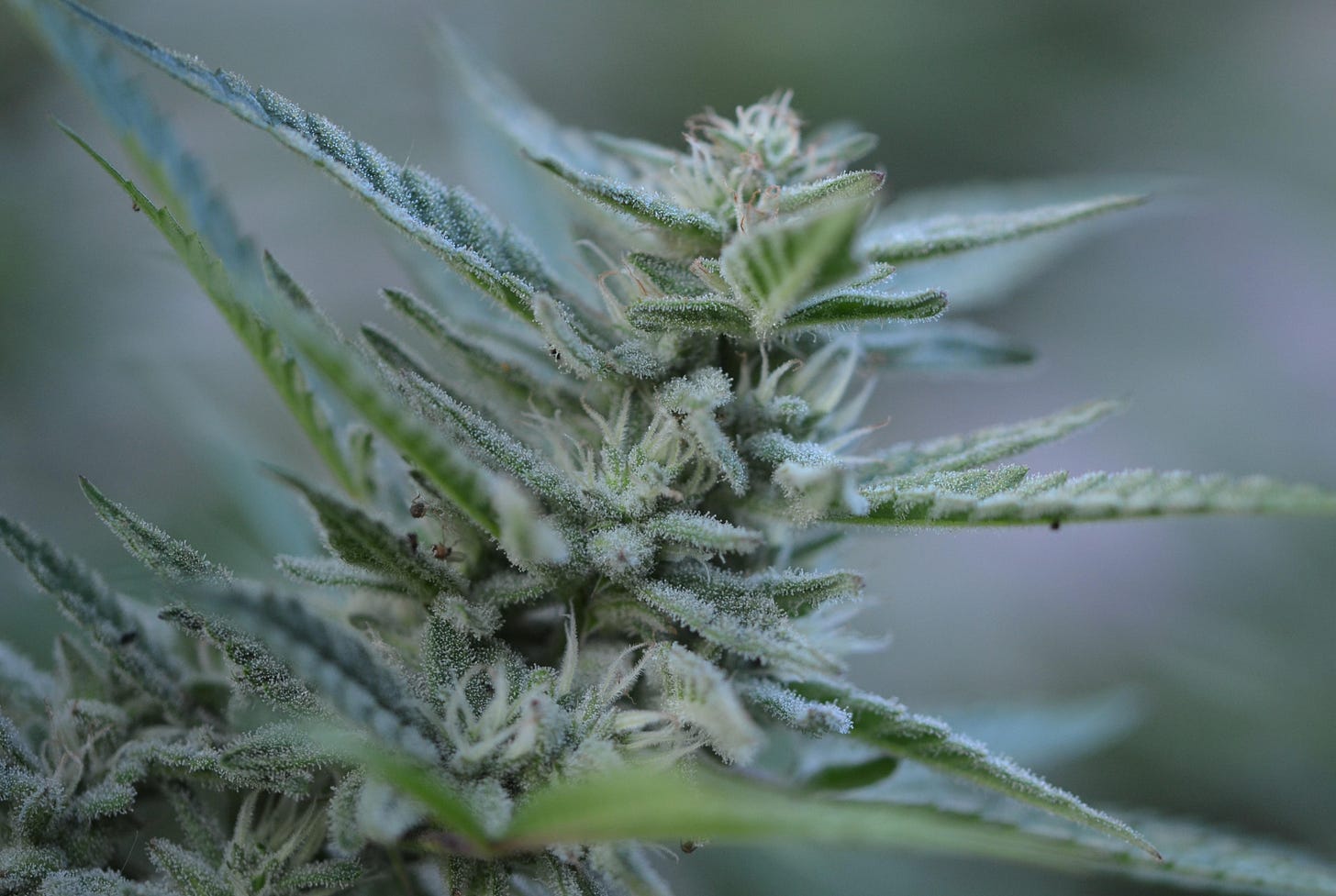
Cannabis has been used by certain cultures as a food and for creating topical medicines for a very long time.
According to the Vedas, cannabis is one of five sacred plants delivered to Earth by Shiva to purify amrita – the elixir of life. One of the oldest and and finished medical textbooks found to this day is The Ebers Papyrus. It has been discovered in Egypt in 1870s and has been estimated to have been written in 1500 BC, however archeologists argue that it might date back even further, to around 2000 BC.
The Ebers Papyrus contains a prescription of hemp to be used in order to treat inflammation and reduce pain, caused by other diseases.
As noted above, Cannabis topicals are not a new phenomenon. The use of externally applied cannabis preparations dates back to ancient China. Archaeological evidence also indicates that the Egyptians used cannabis topically. External application allows cannabis to work on the body directly from where it is applied to soothe and protect the skin.
Research published in 2008 suggests that cannabinoids like THC and CBD are also potent antibiotics on their own. So potent, in fact, that they have successfully killed methicillin-resistant Staphylococcus aureus (MRSA) in the laboratory. MRSA is an antibiotic resistant bacteria that contributes to extremely painful open wounds.
Since MRSA is resistant to common antibiotics, it can be extremely difficult to treat once the infection takes hold. Preclinical research suggests that a few psychotropic cannabinoids, including cannabinol (CBN), cannabichromene (CBC), and cannabigerol (CBG), successfully killed MRSA bacteria.
When Cannabis is applied to the skin it improves the health of this huge organ. THC and CBD interact with the endocannabinoid system, where they have a modulating effect of physiological systems. Research suggests that the endocannabinoid system exists within the skin, where it is heavily implicated in proliferation, growth, differentiation, apoptosis, and hormone production.
What’s interesting is that cannabis is now showing promise for the treatment of burns and wounds when applied as a topical. Cannabinoids exhibit anti-inflammatory properties, potentially assisting in the healing process and pain management of these conditions. Some cannabinoids have also been found to possess antibacterial properties, making them a potential first aid treatment when such injuries arise.
Cannabis has been used as a topical treatment for burns and cuts since ancient times. Yet, it’s not only cannabinoids that may be helpful for burn treatment. Some cannabis cultivars contain high levels of linalool. Linalool is a terpene that provides a floral lavender aroma.
Research suggests that linalool may be very useful for burns. Linalool has both cooling and pain-fighting properties, making it a particularly useful compound for burns.
The role of the endocannabinoid system on the skin
The skin is the largest organ in the body, and the endocannabinoid system (ECS) influences all of its aspects. The ECS plays an important role in skin homeostasis. It impacts oil production, hair growth, skin pigment, wound healing, and how the skin protects itself. CB1 and CB2 receptors and the endocannabinoids anandamide, 2-AG, and FAAH are also found in various types of skin cells. The ECS is essential for keeping the inflammatory processes of the body under control. Overall inflammation in the skin and across the body will decrease when the ECS is functioning optimally.
The endocannabinoid system also modulates the growth, proliferation, and death of skin cells. The most common skin conditions are acne and seborrhea. These situations stem from an overproduction of the skin’s oil by the sebaceous glands. The activation of CB2 receptors in these glands enhances the production of oil. Therefore substances that decrease their local production or antagonize CB2 receptors may successfully treat these conditions. Certain skin diseases will improve by decreasing endocannabinoid tone. Others will improve by increasing endocannabinoid tone.
Based on current research, acne, seborrhea, and alopecia areata require decreased endocannabinoid tone. Skin tumors, psoriasis, hirsutism, dry skin, pain, and itching would be improved by increasing endocannabinoid tone. The endocannabinoid system influences pain and itching by stimulating the central nervous system. In skin diseases such as psoriasis and tumors where abnormal skin cells replicate rapidly, the skin’s ECS will inhibit cell growth and cause cell death. Skin tumors have shown an abundance of CB1 and CB2 receptors.
The use of cannabinoids on the skin may become increasingly important. The antibacterial action of cannabinoids has been researched in-depth. CBD, THC, CBG, and some acidic cannabinoids have shown promise against treatment-resistant MRSA, a life-threatening skin infection that is becoming more difficult to treat with traditional methods.
The cannabis plant is complex, and the manners in which it is taken into the body is no exception. Topicals exert their effects by activating cannabinoid receptors in the skin. This then sets up the cascade of events that leads to pain relief, enhanced healing, and decreased inflammation. THC (delta-9) has been explored for external use as well. A preclinical study in mice demonstrated that topical THC aided skin healing from allergies. A prospective study of three patients with pyoderma gangrenosum (a rare condition that causes large, painful sores) applied THC and CBD-dominant cannabis externally to their lesions. Two of the three patients had a clinically significant improvement in pain and decreased their use of opioids. According to the authors, “This is the first published human case report of topical cannabinoid therapies achieving analgesia that was clinically significant”.
People can take cannabis both internally and topically to act on an area from the inside out. This can be especially helpful when systemic medications do not relieve a particular zone of concern. For example, many arthritic patients take cannabis orally or via inhalation for overall relief of pain and inflammation. If arthritis mostly affects the knees, they can apply a topical to relieve local pain where the systemic medication may not be as effective.
Advantages of using Cannabis topicals:
1. No systemic effects, therefore no impairment
2. Effective local treatment
3. No dose limitations
4. May enhance the effects of systemic products in the target area
5. Can be applied many times per day
For information on the many health benefits offered by ingesting raw cannabis as a non-intoxicating superfood:
References:
- https://www.fundacion-canna.es/en/cannabinoids-and-inflammatory-skin-diseases
- https://www.ncbi.nlm.nih.gov/pmc/articles/PMC2757311/
- https://pubmed.ncbi.nlm.nih.gov/25061872/
- https://www.ncbi.nlm.nih.gov/pmc/articles/PMC4420685/
- https://www.ncbi.nlm.nih.gov/pmc/articles/PMC3165946/
- https://www.ncbi.nlm.nih.gov/pmc/articles/PMC6222489/
-https://pubmed.ncbi.nlm.nih.gov/17157480/
- https://books.google.ca/books/about/Cannabis.html?id=Dl6eMQEACAAJ&redir_esc=y
- https://www.liebertpub.com/doi/10.1089/can.2017.0012
- https://pubmed.ncbi.nlm.nih.gov/10863546/
- https://pubmed.ncbi.nlm.nih.gov/28089235/
- https://pubmed.ncbi.nlm.nih.gov/28818631/
- https://pubmed.ncbi.nlm.nih.gov/9539680/
- https://www.ncbi.nlm.nih.gov/pmc/articles/PMC2689518/
- https://www.cannify.us/education/faq-cannabis-education/what-is-the-difference-between-topical-and-transdermal/
- https://www.jpsmjournal.com/article/S0885-3924(16)30328-1/fulltext
- https://www.ncbi.nlm.nih.gov/books/NBK361003/
2. 𝗖𝗼𝗰𝗼𝗻𝘂𝘁 𝗢𝗶𝗹
For countless generations virgin coconut oil has been used throughout the world as a nourishing food and a healing medicine. Its therapeutic use is described in ancient medical texts from India, Egypt, and China. Among the Pacific Islanders coconut is regarded as a sacred food. The oil is highly revered for its healing properties and forms the basis for nearly all of their traditional cures and therapies. Modern medical science is now unlocking the secrets to virgin coconut oil’s miraculous healing powers.
The lauric acid, capric acid and caprylic acid in coconut oil give it potent antibacterial properties. This helps protect your skin from pathogens that can proliferate causing acne and blemishes. To reap the rewards of this acne-fighting natural oil, simply apply coconut oil to your skin daily. You can use it as an exfoliant or a moisturizer. Coconut oil’s anti-microbial functions also extend to it’s ability to take on fungal infections. Coconut oil can actually inhibit the growth of potentially harmful micro-organisms that can wreak havoc on your skin manifesting in conditions such as athletes foot, eczema or ringworm. If your skin is inflamed due to burn, rash, acne or infection coconut oil can help lessen the inflammation, moisturizing dry skin and accelerating the healing process.
References:
- https://pubmed.ncbi.nlm.nih.gov/20645831/
- https://pubmed.ncbi.nlm.nih.gov/20523108/
- https://www.ncbi.nlm.nih.gov/pmc/articles/PMC5109859/
- https://www.ncbi.nlm.nih.gov/pmc/articles/PMC5796020/
- https://www.ncbi.nlm.nih.gov/pmc/articles/PMC2792613/
- https://onlinelibrary.wiley.com/doi/10.1111/ijd.12339
- https://www.sciencedirect.com/science/article/pii/S2225411017300871?via%3Dihub
- https://www.ncbi.nlm.nih.gov/pmc/articles/PMC444260/
- https://pubmed.ncbi.nlm.nih.gov/19665786/
- https://pubmed.ncbi.nlm.nih.gov/11890570/
- https://pubmed.ncbi.nlm.nih.gov/11413921/
- https://pubmed.ncbi.nlm.nih.gov/15724344/
- https://pubmed.ncbi.nlm.nih.gov/19134433/
- https://pubmed.ncbi.nlm.nih.gov/24320105/
3. 𝗕𝘂𝗿𝗱𝗼𝗰𝗸

There were many Gaelic names for the plant. Leadan liosda meaning, “a head of stiff hair,” being perhaps the most “official.” Carmichael mentions meac-an-dogh and searcan. “Mar cheosan air sgiathan fior-eun,” is an old Irish adage by Ossian meaning, “Like bur clinging to the eagle’s wing.” The ancient Celts had seven herbs that were valued as sacred. They were dandelion, comfrey, mugwort, burdock, mistletoe, nettle, and the Guelder rose.
Considered an invasive weed by many modern gardeners, Burdock was held in high esteem by the Celts who used it as a medicine and a food, its roots being cooked as a vegetable or eaten raw. Unlike the gardeners of today, the Celts considered nothing as a weed and understood that every plant had its values and served a sacred purpose.
Burdock, or burdock root as it’s commonly called, is related to the common dandelion and has been used in food and medicine for thousands of years. Though a plant native to Europe and Northern Asia, it’s now widespread throughout the US. The extensive list of burdock root benefits is thanks to its nutrient-dense profile. It contains powerful antioxidants such as phenolic acids, luteolin and quercetin as well as essential minerals:
• Iron
• Magnesium
• Manganese
• Selenium
• Zinc
• Calcium
Thanks to these minerals and a healthy list of vitamins, burdock root is helpful in improving or correcting a number of skin conditions. It’s been used to treat acne, eczema and psoriasis, which is due to its antioxidant profile, ability to detoxify blood and knack for improving circulation – all of which promote optimal skin health.
In fact, a 2008 study found that the use of burdock extract led to visible wrinkle reduction. It also significantly improved the metabolism of external skin layers, creating a powerful anti-aging effect.
On a fascinating side note: Burdock (and many other kinds of plants) produce seeds that are covered in tiny hooks. These tiny hooks catch on the fur (or socks!) of passing animals, helping the plant disperse its seeds. These biological mechanisms inspired George de Mestral, the inventor of Velcro. Thus, this sacred plant which has been revered by Celtic medicine women and men for centuries has also served as a wise teacher offering modernized humans glimpses into the geometric genius and opportunities for biomimicry that Mother Earth’s living systems offer us.
References:
- https://www.organicfacts.net/health-benefits/herbs-and-spices/burdock.html
- https://pubmed.ncbi.nlm.nih.gov/19146605/
- https://onlinelibrary.wiley.com/doi/10.1002/9781118543436.ch17
- https://pubmed.ncbi.nlm.nih.gov/24931753/
- https://pubmed.ncbi.nlm.nih.gov/20981575/
4. 𝗛𝗼𝗹𝘆 𝗕𝗮𝘀𝗶𝗹 (𝗮𝗸𝗮 “𝗧𝘂𝗹𝘀𝗶)
In the ancient Vedic Purana text, Tulsi, called “Queen of Herbs,” is noted as the plant embodiment of Lakshmi (wife of Vishnu and the goddess of wealth and generosity). Tulsi is viewed as a living gateway between heaven and earth, and regarded as the manifestation of the divine within the plant kingdom.
Within Ayurveda, tulsi is known as “The Incomparable One,” “Mother Medicine of Nature” and “The Queen of Herbs,” and is revered as an “elixir of life” that is without equal for both its medicinal and spiritual properties.
The medicinal properties of tulsi have been studied in hundreds of scientific studies (including animal and human experiments). These studies reveal that tulsi has a unique combination of actions that include: Antimicrobial (including antibacterial, antiviral, antifungal, antiprotozoal, antimalarial, anthelmintic), mosquito repellent, anti-diarrheal, anti-oxidant, anti-cataract, anti-inflammatory, chemopreventive, radioprotective, hepato-protective, neuro-protective, cardio-protective, anti-diabetic, anti-hypercholesterolemia, anti-hypertensive, anti-carcinogenic, analgesic, anti-pyretic, anti-allergic, immunomodulatory, central nervous system depressant, memory enhancement, anti-asthmatic, anti-tussive, diaphoretic, anti-thyroid, anti-ulcer, anti-emetic, anti-spasmodic, anti-arthritic, adaptogenic, anti-stress, anti-cataract, anti-leukodermal and anti-coagulant activities. These pharmacological actions help the body and mind cope with a wide range of chemical, physical, infectious and emotional stresses and restore physiological and psychological function.
Holy basil’s clove- and mint-like fragrance pulls people into a relaxing, Zen state. Most famously, Tulsi acts as an adaptogenic herb, helping the body adapt to stress and find deep reserves of energy. Holy basil is said to be one of the easiest of all adaptogens to grow and harvest in abundance, and its ability to both calm, detoxify, heal and energize makes it a must have in the kitchen and 'natural first aid kit'.
Tulsi is jam packed with antibacterial, anti-inflammatory, and antioxidant properties, that all work together to heal the skin.
The antiseptic properties of holy basil make it useful for other topical applications, including for wounds, ulcers, challenging skin diseases like athlete’s foot and staph infections of the skin.
Ursolic acid, a major compound found in holy basil, is a carboxylic acid present in a wide variety of plants in the form of a free acid or an aglycone of triterpene saponines. It has been used to treat photoaged skin because it inhibits the appearance of wrinkles and age spots by restoring the skin’s collagen bundle structures and elasticity. Ursolic acid also blocks the inflammatory enzymes cyclooxygenase and lipoxygenase, as well as inhibits tumors (through the inhibition of MMP-2 and 9). Because of its wound-healing and antioxidant activities, holy basil may be useful in the management of abnormal healing conditions such as keloids and hypertrophic scars. Holy basil’s pain-relieving action is exerted both centrally as well as peripherally and involves an interplay between various neurotransmitter systems. Pre-clinical studies show that phytochemicals in holy basil—including eugenol, rosmarinic acid, apigenin, myretenal, luteolin, β-sitosterol, and carnosic acid—may prevent chemical-induced skin, liver, oral, and lung cancers. The protective effects include increasing antioxidant activity, altering gene expression, inducing apoptosis, and inhibiting angiogenesis and metastasis.
An aqueous extract of tulsi and its flavonoids, orientin and vicenin, appear to protect mice against radiation-induced sickness and mortality and to selectively protect normal tissues against the tumoricidal effects of radiation. Other phytochemicals like eugenol, rosmarinic acid, apigenin, and carnosic acid found in holy basil have also been shown to prevent radiation-induced DNA damage.
Tulsi essential oil has also been scientifically shown to be effective against selected microbial pathogens. There are more than fifty compounds that have been identified in Tulsi leaves, flower spikes, or essential oil, and three of these are directly responsible for this activity: camphor, eucalyptol, and eugenol. Since the bacteria S. aureus (including MRSA), P. aeruginosa, and E. coli are major pathogens causing skin and soft tissue infections, Tulsi essential oil has been studied and lauded for its value as a topical antimicrobial agent for the management of skin infections caused by these organisms.
For more information on the many health benefits of Tulsi:
References:
- https://www.frontiersin.org/articles/10.3389/fmicb.2016.00681/full
- http://www.scienceasia.org/content/viewabstract.php?ms=2741&v=11&abst=1
- https://draxe.com/essential-oils/clove-oil-uses-benefits/
- https://www.ncbi.nlm.nih.gov/pmc/articles/PMC4296439/
- https://pubmed.ncbi.nlm.nih.gov/11595826/
- https://www.ncbi.nlm.nih.gov/pmc/articles/PMC3116524/
- https://pubmed.ncbi.nlm.nih.gov/10782484/
- S.K. Das, A. Chandra, S.S. Agarwal, N. Singh, N. (1983). Ocimum sanctum (Tulsi) in the treatment of viral encephalitis. The Antiseptic, pp.1-5.
- B. Vrinda and P. Uma Devi, “Radiation protection of human lymphocyte chromosomes in vitro by orientin and vicenin,” Mutation Research 498(1–2) (2001): 39–46 [FC]; R. S. Ubaid, K. M. Anantrao, J. B. Jaju, and M. Mateenuddin,
- “Effect of Ocimum sanctum (OS) leaf extract on hepatotoxicity induced by antitubercular drugs in rats,” Indian Journal of Physiology nd Pharmacology 47(4) (2003): 465–70.
- http://www.sciepub.com/reference/61289
- https://www.ijpsdr.com/index.php/ijpsdr/article/view/193
- F. L. Hakkim, C. G. Shankar, and S. Girija, “Chemical composition and antioxidant property of holy basil (Ocimum sanctum L.) leaves, stems, and inflorescence and their in vitro callus cultures,” Journal of Agricultural and Food Chemistry 55(22) (2007): 9109–17. [FC]
- https://pubmed.ncbi.nlm.nih.gov/17887944/
- Baliga MS , Jimmy R, Thilakchand KR, Sunitha V, Bhat NR, Saldanha E, Rao S, Rao P, Arora R, Palatty PL. Ocimum sanctum L (Holy Basil or Tulsi) and its phytochemicals in the prevention and treatment of cancer, Nutr Cancer. 2013;65 Suppl 1:26-35. doi: 10.1080/01635581.2013.785010.
- https://pubmed.ncbi.nlm.nih.gov/27072205/
- S. C. Kim, V. Magesh, S. J. Jeong, et al., “Ethanol extract of Ocimum sanctum exerts anti-metastatic activity through inactivation of matrix metalloproteinase-9 and enhancement of anti-oxidant enzymes,”Food and Chemical Toxicology 48(6) (2010): 1478–82. [FC]
- Ahmad, et al. “Ocimum sanctum attenuates oxidative damage.”
- https://pubmed.ncbi.nlm.nih.gov/15219842/
- Dharmani, et al., “Evaluation of anti-ulcerogenic and ulcer-healing properties.”
- https://pubmed.ncbi.nlm.nih.gov/17051736/
5. 𝗙𝗿𝗮𝗻𝗸𝗶𝗻𝗰𝗲𝗻𝘀𝗲
Whether you’re walking among the limestone cliffs of Oman or the rocky plains of Somalia, you’re sure to come across a frankincense-giving tree. Frankincense essential oil is often derived from the sap of the Boswellia sacra in Oman, and Frankincense essential oil comes from the Boswellia carterii in Somalia—both trees spindly, ethereal, and wild in their own right.
The Boswellia tree can grow with little to no soil, blooms with white or pale rose-colored flowers, and has bark that feels like the pages of a storybook. These trees adapt to thrive on steep slopes and ravines where they produce enough gum resin for harvesting. Frankincense was used by Hebrews and Christians nearly 2,000 years ago in religious ceremonies, making the demand for frankincense so high that it quickly become one of the most sought-after trade items in the world. This has also led to unsustainable harvesting practices so please make sure you know what kind of Frankincense company you are supporting and due your research prior to purchase.
Frankincense benefits include the ability to strengthen skin and improve its tone, elasticity, and defense mechanisms against bacteria or blemishes. Studies have shown frankincense to have anti-inflammatory and “tissue remodeling” properties, too. Frankincense is an antiseptic and disinfectant agent that has antimicrobial effects. For these reasons, it’s often added to acne treatments anti-aging products and formulas for hyperpigmentation. Studies have demonstrated that frankincense benefits extend to immune-enhancing abilities that helps destroy dangerous bacteria, viruses and even cancers. Researchers at Mansoura University in Egypt conducted a lab study and found that frankincense oil exhibits strong immunostimulant activity. Thus, it can be used to prevent germs from forming on the skin. Because it is a very potent astringent, Frankincense oil will diminish the presence of fine lines and wrinkles, and will reduce the effect of sagging skin. You can apply it on the jowls, abdomen, or under the eyes, to make the skin tighten. Age spots and acne blemishes will also vanish.
Frankincense essential oil is also potent when it comes to skin cell regeneration. Here are just a few skin benefits that can come as a result of the regenerative power of frankincense.
- Frankincense naturally boosts the production of new skin cells, possibly due to a high concentration of boswellic acid.
- Skin becomes tighter and more elastic.
- The visible appearance of scars may be reduced.
- Skin becomes smoother and more even in tone.
- The antiseptic properties of frankincense promote healthy skin microbiome.
References:
- https://www.ncbi.nlm.nih.gov/pmc/articles/PMC3924999/
- https://www.ncbi.nlm.nih.gov/pmc/articles/PMC5801908/
- https://www.sid.ir/en/Journal/ViewPaper.aspx?ID=48926
- https://www.jstage.jst.go.jp/article/jhs/53/4/53_4_365/_article/-char/ja/
- https://pubmed.ncbi.nlm.nih.gov/12244881/
- https://pubmed.ncbi.nlm.nih.gov/27117114/
- https://www.ncbi.nlm.nih.gov/pmc/articles/PMC4556964/
6. 𝗦𝗮𝗴𝗲
True or common sage, Salvia officinalis, is native to the Mediterranean and has been used for centuries for its culinary and medicinal values.
The genus name, Salvia, is variously attributed to derivation from the Latin salveo, meaning "to heal," or salvus, meaning "safe," or salvare, meaning "to save." These are considered indicative of the common sage's highly regarded healing properties.
Sage has a very long and rich history due to both its medicinal and culinary uses. At one time, the French produced bountiful crops of sage which they used as a tea. The Chinese became enamored with French sage tea, trading four pounds of Chinese tea for every one pound of sage tea. In 812 AD, sage was one of the plants deemed so important that Charlemagne ordered it planted on German Imperial farms, no doubt due to the lucrative trade business as well as for its medicinal popularity. The ancient Greeks used Salvia offinalis to treat consumption, ulcers, and snake bites. The Egyptians used it to treat the plague. The Ancient Romans considered common sage to be a sacred herb and harvested it by means of an elaborate ceremony whereby a special knife would be used (one not made of iron since it reacts with the sage) and the sage gatherer would wear clean clothes, have clean feet, and offer a sacrifice of food before he could begin
In ancient Rome, sage was considered to have substantial healing properties, particularly helpful in the digestion of the ubiquitous fatty meats of the time, and was deemed a part of the official Roman pharmacopeia. The herb was used to heal ulcers, to help stop the bleeding of wounds, and to soothe a sore throat. Many people in China used sage to treat colds, joint pain, typhoid fever, and kidney and liver issues.
Sage truly has a rich history of use of healing, both medicinally and spiritually.
The benefits and uses of sage are widespread. In the battlefields, sage was used by military doctors, notably Dioscorides, who found sage to be especially helpful in stopping bleeding wounds. In monasteries, sage was planted by monks and used in therapies for themselves and for the community. Sage is burned ceremoniously to dispel negativity, to purify a person or place. And recent Studies validate these ancient purification practices, showing that medicinal smoke reduces airborne bacteria by 94% for 24 hours.
In aromatherapy, sage oil is infamous for delivering feelings of balance and relaxation. And recently, the topical benefits of this essential oil has proven to be effective as an ingredient in cosmetics, eliminating toxins, diminishing the appearance of blemishes, and relieving skin irritation.
The main chemical constituents of Sage Oil are aesculetin, alpha-humulene, alpha thujene, alpha-thujone, alpha-terpineol, alpha terpenes, alpha-pinene, alpha maaliene, aromadendrene, beta-pinene, beta copaene, beta-thujone, borneol, camphor, cineole, caryophyllene oxide, camphene, delta cadinenes, linalool, limonene, myrcene, ocimene, octanol, paracymene, para cymenol, salviol, terpineol, thujanol, and terpinolene. The health benefits of sage essential oil can be attributed to its properties as an antifungal, antimicrobial, antioxidant, antiseptic, anti-inflammatory, antispasmodic, antibacterial, disinfectant and a stimulating substance.
Many studies have shown that applying or inhaling sage oil results in lower blood pressure and reduced feelings of anxiety. Senses of smell trigger the olfactory system, which is a brain function that brings out emotion and memories. The smell of sage oil in aromatherapy can elicit calmness, balance, and a sense of well-being. Its moisturizing and conditioning properties help soothe dryness and irritation in the skin. The presence of camphor and camphene in this essential oil gives it a antifungal property. This oil is capable of inhibiting fungal infections, both internally and externally, and gives relief from fungal infections like dysentery, skin diseases, Athlete’s Foot or dermatitis. This property is one of the causes behind its use in skincare products.
Studies have also shown when applied topically sage extracts can help heal wounds faster (especially wounds that are related to: bacterial strains, burns, skin abrasions, and infections). It helps eliminate toxins and is both antimicrobial and antibacterial. Along with having antibacterial properties, the essential oil may contain antifungal effects, which can be effective for treating dermatitis and Athlete’s foot. It may also fight the growth of E. coli by targeting the bacteria cells.
References:
- https://www.ncbi.nlm.nih.gov/pmc/articles/PMC4003706/
- https://www.semanticscholar.org/paper/QUANTITATIVE-ANALYSIS-OF-PHENOLIC-COMPOUNDS-FROM-L.-G%C3%AErd-Nencu/d0ef4dc274ebdd1ab7c58f9f80dac74cf39641b7?p2df
- https://www.ajol.info/index.php/ajb/article/view/95425
- https://www.ncbi.nlm.nih.gov/pmc/articles/PMC5318325/
- https://pubmed.ncbi.nlm.nih.gov/11297842/
- https://www.semanticscholar.org/paper/Evaluation-of-the-Anti-Motility-Related-Diarrhoeal-Al-maamori/e113d693d4b20ce2a76537c617dcc222ee445004?p2df
7. 𝗖𝗮𝗰𝗮𝗼 𝗕𝘂𝘁𝘁𝗲𝗿
The use of cacao by humans is well beyond 5,000 years old. Cacao is a traditional food/medicine plant of the ancient peoples of Central and South America.
The Maya, Olmec, Inca and peoples of the Triple Alliance (Nahuatl speaking people commonly referred to as "Aztec" who referred to themselves as the "Mexica" or "Tenochca" people) all enjoyed various forms of cocao in their diet. Depending on culture, era (and societal rank) Cacao beans were often used to create a beverage called Xocolatl. It was prepared with variations (sometimes including spices/herbs for flavoring like vanilla, chilis, cinnamon, nutmeg, allspice and corn meal).
Considered to be the "Drink Of The Gods" by the ancient Maya and people of the Triple alliance, this ancient precursor to chocolate has some amazing health benefits. It was popularly consumed by the elite. However, cacao consumption was not as regular in those among the Triple Alliance (aka "Aztecs") as it was among the Maya.
With such a large list of health benefits It is no wonder that the Maya and "Aztec" people revered the cocao plant so much and considered Xocolatl to be a 'holy beverage'. Even the latin name ("Theobroma cacao") reflects a reverence for its healing, healthful and invigorating effects (Theobroma means "food of the gods".)
According to historical sources, in 1502 Columbus and his crew became the first Europeans to come in contact with Cacao beans. The story goes that in the Bay of Honduras during the fourth voyage, they first spotted what would eventually come to be known as “Brown Gold” at the bottom of a canoe, which belonged to the aboriginals of New Spain, who used the beans as currency – money that literally grew on trees. Having been mistaken for almonds, the potential value of the beans could not be predicted or appreciated, thus they went dismissed.
Despite Columbus and his crew being the first to find the beans, it was the Spanish Conquistador Hernando Cortez, who introduced the Cacao tree to Europe. It is believed that while visiting the Aztec community, he shared a chocolate drink with their emperor, after which he introduced the drink and its brewing equipment to the Spanish court in 1528. At this time, chocolate was still not foreseen to be a potentially significant international trade commodity, but after winning the war against Native tribes and after the collapse of the Aztec civilization, Cortez increased his efforts to cultivate the Cacao tree in New Spain, intending to develop a profitable trade with Europe.
The cultivation of Cacao trees in Europe soon migrated East, eventually allowing them to become an international botanical. In 1828, a scientist named Conrad Von Houten invented the Cocoa press to extract a purer chocolate. It was during the Cacao bean pressing process that Cocoa Butter was discovered.
Research suggests that cocoa butter can improve the skin, and it has anti-inflammatory and antioxidant effects. Cocoa butter is a type of fat that comes from cocoa beans. Manufacturers extract creamy cocoa butter from the beans by fermenting, drying, roasting, and then pressing them. They turn the remaining portion into cocoa powder.
Cocoa butter is a common active ingredient in lotions, creams, and lip balms.
In more recent times, researchers have found that cocoa butter has several healthful properties, including anti-inflammatory and antioxidant effects. This makes it instantly beneficial for the skin, helping to protect the skin from sun damage and premature signs of aging. Cocoa butter also has excellent anti-inflammatory properties for soothing dry patches and irritation. Many studies have shown that plant polyphenols exert antioxidant powers within the immune system, fighting inflammation, DNA damage and cellular mutations, which are the underling cause of diseases like cardiovascular disease, cancer and autoimmune conditions that can lead to fatigue.
Many of these properties are due to substances that cocoa butter contains, such as catechin. It is also full of fatty acids like oleic acid, palmitic acid, and stearic acid, cocoa butter is full of antioxidants that fight free radicals. These antioxidants also ensure a long shelf life. Despite being considered a saturated fat, cocoa butter is, in fact, a healthy fat – mostly saturated –similar to coconut oil. The amount of saturated fat it contains (as opposed to unsaturated fat) is between 57 percent to 64 percent of the total fat content, depending on the exact kind.
Minimally processed, and not heated to high temperatures during manufacturing, cocoa butter typically retains more of the healthy fats and other superfood compounds found naturally in cocoa beans. Cocao butter also helps boost neurotransmitters and balance hormones. Whether ingested or applied topically, cocoa butter effectively raises dopamine and serotonin.
The main chemical constituents of Cocoa Butter are: Oleic Acids, Stearic Acid, Palmitic Acid, Linoleic Acid, Arachidic Acid, Palmitoleic Acid, Vitamin E, Vitamin K, alpha-Linolenic Acid, and Phytosterols (namely Stigmasterol).
OLEIC ACIDS (OMEGA 9) are known to:
• Maintain the softness, suppleness, and radiance of skin and hair
• Stimulate the growth of thicker, longer, and stronger hair
• Reduce the appearance of aging, such as premature wrinkles and fine lines
• Eliminate dandruff and thereby support hair growth
• Boost immunity
• Exhibit antioxidant properties
• Prevent joint inflammation, stiffness, and pain
• Impact the hardness or softness of the butter
STEARIC ACID is known to:
• Have cleansing properties that purge dirt, sweat, and excess sebum from hair and skin
• Be an ideal emulsifying agent that binds water and oil
• Help products remain potent when stored for long periods of time
• Condition and protect hair from damage without diminishing luster or making it feel heavy
• Have exceptional cleansing properties
• Soften skin
• Provides the butter with a solid consistency
PALMITIC ACID is known to:
• Have emollient properties
• Soften hair without leaving a greasy or sticky residue
• Be the most common saturated fatty acid
LINOLEIC ACID (OMEGA 6/Vitamin F) is known to:
• Moisturize hair and promote its growth
• Facilitate wound healing
• Be an effective emulsifier in the formulation of soaps and quick-drying oils
• Exhibit anti-inflammatory properties
• Soothe acne and reduce chances of future outbreaks
• Promote moisture retention in skin and hair
• Make oils feel thinner in consistency when used in an oil blend, thus being beneficial for use on acne-prone skin
• Soothe and promote the healing of skin conditions like eczema and dermatitis
• Slow the look of premature aging
ARACHIDIC ACID is known to:
• Enhance and promote muscle gain/mass by boosting the body’s inflammatory responses
• Boost immunity
• Ease symptoms of depression
• Soothe pain and discomfort associated with arthritis
• Reduce weight
PALMITOLEIC ACID is known to:
• Delay the appearance of premature aging
• Moisturize and tighten the skin
• Promote the growth of shiny hair
• Enhance the brightness of the complexion
• Boost the growth of healthy-looking nails
• Enhance skin elasticity to prevent symptoms of premature aging, such as wrinkles
VITAMIN E is known to:
• Have antioxidant properties that slow the look of aging and boost circulation
• Repair scarred and blemished skin
• Prevent moisture loss from skin and hair
• Offer soothing relief to skin that has been burned
• Deeply cleanse pores and balance oil production
VITAMIN K is known to:
• Boost the body's ability to clot blood, thereby facilitating the healing of wounds and bruises
• Reduce swelling and bruising
• Helping prevent acne and reduce the appearance of scars caused by acne
• Slow the look of aging by preventing wrinkles
• Regenerate hair strands and promote regrowth
ALPHA-LINOLENIC ACID (OMEGA-3) is known to:
• Lessen inflammation
• Control blood clotting on the skin
• Soothe joint pain and ease stiffness to improve flexibility
PHYTOSTEROLS (STIGMASTEROL) is known to:
• Have skin lightening properties
• Effectively soften dry, brittle hair
• Ease frizzy hair
• Have anti-inflammatory properties
• Exhibit anti-aging effects
• Improve blood circulation
Used topically, Cocoa Butter melts at body temperature and works to naturally soothe dry, sensitive skin while reducing and preventing the appearance of scars and unwanted marks. Its richness in vitamins and anti-oxidants makes it ideal for use as a moisturizer that promotes skin health and relieves the itching, chapping, peeling, or burning discomfort associated with conditions such as eczema and dermatitis. By creating a protective barrier between skin and the harsh, weathering environmental elements, Cocoa Butter’s saturated fats allow skin to retain its required moisture, thereby restoring the health of by remaining on the skin for hours despite being easily absorbed. The polyphenols in Cocoa Butter are known to diminish the appearance of aging by enhancing skin’s moisture content, skin tone, elasticity, and collagen production. By virtue of these polyphenols, Cocoa Butter is reputed to avert skin sensitivities, damage, and degeneration. By deeply penetrating skin to offer intense hydration, Cocoa Butter boosts dermal circulation while facilitating the reparation of damaged skin as well as the growth of newer, healthier skin that looks and feels younger, softer, and smoother. Cocoa Butter is believed to have photo-protective properties that serve to protect the skin from harmful UV radiation. It can also be used to protect against frost bite or even indoor heat.
For more information on the many health benefits of Cacao beans/”butter”:
References:
- https://www.mdpi.com/2072-6643/6/8/3202/htm
- https://onlinelibrary.wiley.com/doi/abs/10.1111/j.1468-2494.2008.00457.x
- https://pubmed.ncbi.nlm.nih.gov/14640573/
- https://obgyn.onlinelibrary.wiley.com/doi/10.1111/j.1471-0528.2008.01796.x
- https://www.ncbi.nlm.nih.gov/pmc/articles/PMC4145303/
𝗔𝗹𝗼𝗲 𝗩𝗲𝗿𝗮
There are over 200 compounds naturally in an aloe plant and at least 75 medicinally active nutrients with rich vitamins, minerals, and amino acids.
It contains a wide range of antiseptic compounds, including salicylic acid, phenols, and sulfur, aloe vera has antibacterial, antifungal, and antiviral benefits for the skin. Together, they work to increase the rate of cell turnover and the production of healthy, new tissue where the skin was injured. Add to that the plant's pain-relieving, or analgesic, properties and you've got yourself on the road to wound recovery.
The first known written reports on the nourishing juice of the aloe vera plant reach as far back as 6,000 years ago in ancient Egypt. Aloe was regarded as a sacred plant the “blood” of which held the secrets to beauty, health and immortality. Both Cleopatra and Nofretete greatly valued the nourishing juice and used it as a part of their daily skin and beauty care. The usage of aloe was regarded as the pursuit of physical beauty.
Antioxidants are important for health. Aloe vera gel contains powerful antioxidants belonging to a large family of substances known as polyphenols. Science has now confirmed that Aloe Vera is great for wounds (such as burns, cuts or abrasions) as contains anti-inflammatory chemical compounds — which reduce swelling — called anthraquinones. These chemical compounds promote healing (it promotes tissue healing by making new, healthy skin cells replicate faster and more efficiently) and alleviates pain when applied to your skin. Skin with a broken barrier is also more prone to fungal and bacterial infections, and aloe vera can be considered an antiseptic acting against fungi, bacteria, and viruses.
Polyphenols (such as anthraquinones), along with several other compounds in aloe vera, help inhibit the growth of certain bacteria that can cause infections in humans.
Studies suggest that it is an effective topical treatment for first and second degree burns.
For example, a of experimental studies found that aloe vera could reduce the healing time of burns by around 9 days compared with conventional medication. It also helped prevent redness, itching, and infections.
This is part of why it may help heal wounds and treat skin problems.
References:
- https://www.ncbi.nlm.nih.gov/pmc/articles/PMC3729540/
- https://www.ncbi.nlm.nih.gov/pmc/articles/PMC6330525/
- https://www.ncbi.nlm.nih.gov/pmc/articles/PMC3491322/
- https://www.ncbi.nlm.nih.gov/pmc/articles/PMC2883372/
- https://www.ncbi.nlm.nih.gov/pmc/articles/PMC2763764/
- https://www.sciencedirect.com/science/article/pii/S2225411014000078
- https://www.ncbi.nlm.nih.gov/pmc/articles/PMC6017010/
- https://pubmed.ncbi.nlm.nih.gov/17026654/
- https://www.karger.com/Article/Fulltext/454718
- https://pubmed.ncbi.nlm.nih.gov/12548256/
- https://www.ncbi.nlm.nih.gov/pmc/articles/PMC4452276/
- https://www.hmpgloballearningnetwork.com/site/wounds/article/effects-aloe-vera-wound-healing-cell-proliferation-migration-and-viability
- https://pubmed.ncbi.nlm.nih.gov/27973656/
- https://pubmed.ncbi.nlm.nih.gov/28700086/
White Pine
The Eastern White Pine is known as “zhingwaak” to the First Nation Ojibwe people of the Great Lakes area).
With a long and interesting history that stems back to use in ancient Greek civilizations, including by Hippocrates, pine needle extract (or “pine oil”) is an age-old therapeutic method for cleansing, reducing pain, increasing energy and relieving stress.
Once extracted from the needles into , this concentrated formula holds powerful active constituents that lower disease-causing inflammation, lift your mood through aromatherapy, as well as kill bacteria, fungi, yeast and pathogens.
Eastern white pine tree needles (Pinus Strobus) contain many beneficial constituents such as Alpha-Pinene, Beta-Pinene, Beta-Phellandrene, D-Limonene, Germacrene D, 3-Carene, Caryophyllene, vitamin A, and vitamin C.
As a detoxifying ingredient and natural disinfectant, pine oil is commonly used in massage oil blends, household cleaning products and air fresheners. It can stimulate blood flow and help decrease swelling, tenderness and pain within sore muscles or joints associated with inflammation.
Pine needle extract benefits include:
Accelerated healing times
Cleansing pathogenic bacteria, fungi, pathogens and yeast
Pine needle extract is useful with a variety of skin conditions, including psoriasis, warts, boils, athlete’s foot, eczema and itching.
Decreasing inflammation
Pine oil has been used to fight free radical damage and chronic inflammatory responses that can lead to pain or swelling and even contribute to chronic diseases, including arthritis and cancer.
Decreasing allergies
Fighting free radicals through the presence of antioxidants, including polyphenols
Treating muscle aches and pain
Energizing and lifting your mood and focus
Pine needle extract is often used for relieving mental and physical fatigue since it can help improve thinking, alertness and memory. It makes a great natural additive to a body lotion or salve for improving focus during studying, exercise, driving and any other situation where you need to remain alert. It also has the ability to increase your clarity of mind.
For additional information on the many health benefits offered by White Pine needles:
References:
- https://pubmed.ncbi.nlm.nih.gov/15300001/
- https://www.ncbi.nlm.nih.gov/pmc/articles/PMC7827367/
-https://www.researchgate.net/publication/6355045_Antioxidant_Antimutagenic_and_Antitumor_Effects_of_Pine_Needles_Pinus_densiflora
- https://pubmed.ncbi.nlm.nih.gov/33203819/
- https://pubs.acs.org/doi/abs/10.1021/jf990146l
- https://www.sciencedirect.com/science/article/abs/pii/S0378874111008543
- https://www.researchgate.net/publication/333664831_Essential_Oils_from_Pines_Chemistry_and_Applications
-
- https://pubmed.ncbi.nlm.nih.gov/16489551/
- https://pubmed.ncbi.nlm.nih.gov/15675800/
- https://pubmed.ncbi.nlm.nih.gov/25076730/
𝗟𝗮𝘃𝗲𝗻𝗱𝗲𝗿
The origin of Lavender is believed to be from the Mediterranean, Middle East and India. Its history goes back some 2500 years. Lavender is a flowering plant of the mint family known for its beauty, its sweet floral fragrance and its multiple uses.
The ancient Greeks called Lavender nardus, after the Syrian city of Naarda and was commonly called Nard. Lavender was one of the holy herbs used to prepare the Holy Essence and Nard, or ‘spikenard’ is mentioned in the bible in the ‘Song of Solomon’ among other places.
Lavender derives its name from the Latin ‘lavare’ meaning ‘to wash”. The Romans used Lavender to scent their baths, beds, clothes and even hair. They also discovered its medicinal properties.
Lavender plant material (and lavender essential oil derived from the lavender plant) can be taken orally, applied to the skin, and breathed in through aromatherapy.
Lavender oil can benefit the skin in numerous ways. It has the ability to lessen acne, help lighten skin, and reduce wrinkles. When applied to the skin, lavender oils have shown positive results in helping with eczema, acne, sunburns, and diaper rash. In recent studies investigating lavender’s accelerated wound healing properties, lab studies found lavender oil promoted collagen synthesis and differentiation of fibroblasts, accompanied by up-regulation of TGF-β. This data suggest that lavender oil has the potential to promote wound healing in the early phase by acceleration of formation of granulation tissue, tissue remodeling by collagen replacement and wound contraction through up-regulation of TGF-β.
There are compounds in lavender which have anti-inflammatory, antiseptic, antibacterial, antifungal, antidepressant and antimicrobial properties. Thus, lavender can improve digestion, reduce anxiety and emotional stress, improve sleep, heal burns and wounds, improve eczema and psoriasis, restore skin complexion and reduce acne. As mentioned above, Linalool has powerful healing properties. Linalool is also highly concentrated in lavender. Thus, mixing lavender and cannabis offers a synergistic effect in accelerating the healing of burns.
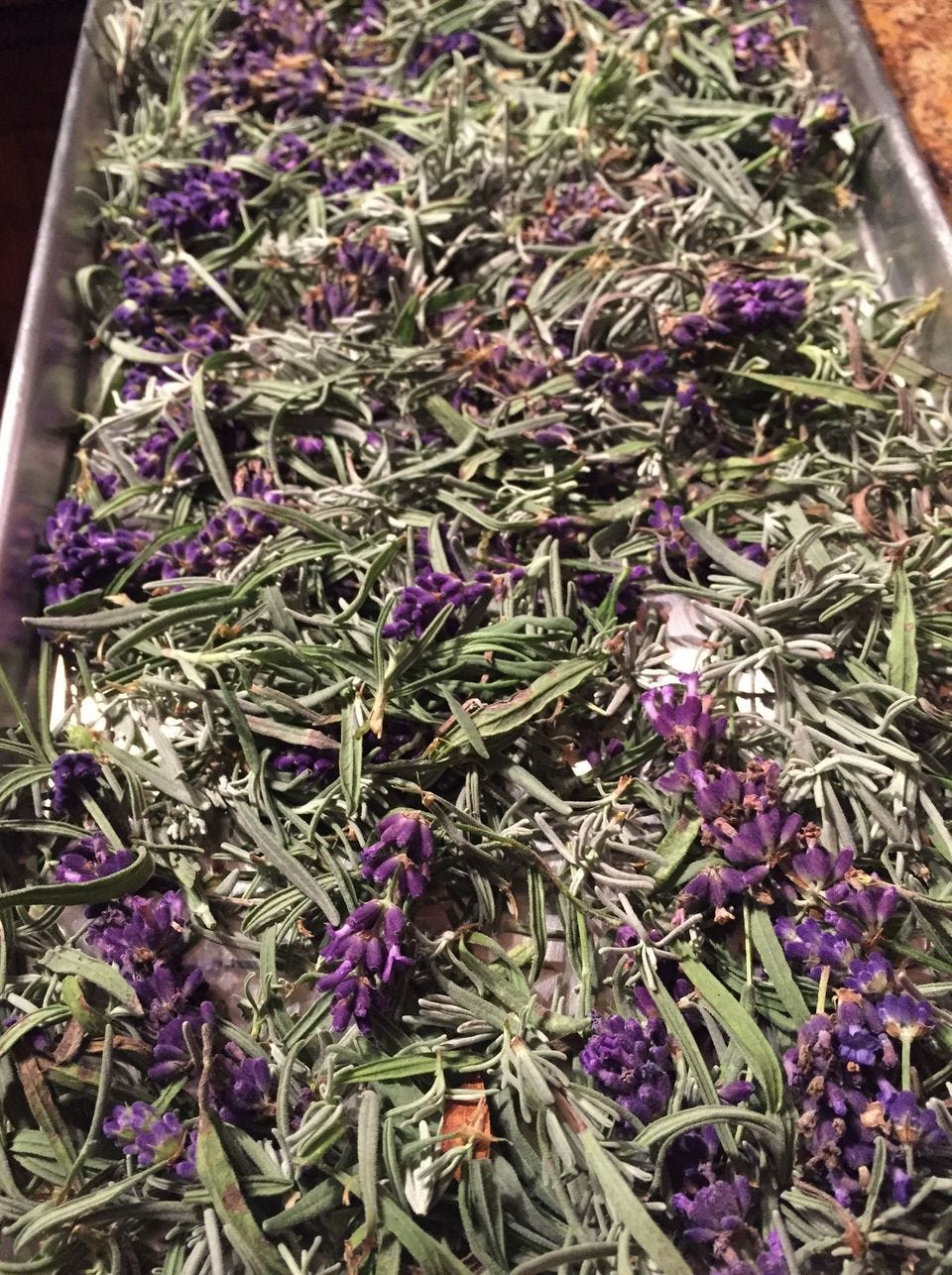
References:
- https://www.ncbi.nlm.nih.gov/pmc/articles/PMC4880962/
- https://www.healthline.com/health/what-is-camphor
- https://www.ncbi.nlm.nih.gov/pmc/articles/PMC3612440/
- https://www.sciencedirect.com/topics/agricultural-and-biological-sciences/linalool
- https://www.sciencedirect.com/topics/neuroscience/cineole
- https://pubmed.ncbi.nlm.nih.gov/16884344/
- https://www.nccih.nih.gov/health/lavender
- https://www.hilarispublisher.com/scholarly/lavender-oil-journals-articles-ppts-list-313.html
Organic 𝗦𝘂𝗻𝗳𝗹𝗼𝘄𝗲𝗿 𝗟𝗲𝗰𝗶𝘁𝗵𝗶𝗻
Lecithin describes a substance that’s naturally found in the tissues of your body. It’s made up of fatty acids and it has a variety of medical (and medicine/food processing/preserving) uses. Lecithin consists mainly of fatty acids called phospholipids. Phospholipids are building material of cell membranes that are particularly rich in choline for humans. Lecithin also contains linoleic acid, alpha-linolenic acid, glycerol and small amounts of biotin.
Lecithin works as an emulsifier, meaning it suspends fats and oils and keeps them from mixing with other substances (this was was an especially helpful property for my recipe as I included fresh aloe vera gel). More importantly, lecithin increases the absorption of cannabinoids (and other medicinal phytochemicals) into your cell membranes, speeding up the absorption process when added to cannabis-infused ingredients. This means when combined with cannabis, lectin improves how much medicinal compounds your cells are capable of getting out of the end product and may also make it faster acting (increase the rate at which the cannabinoids are absorbed into the cells).
Some of the benefits that lectin offers when included in a topical include:
- Being one of the skin’s own natural ingredients lecithin is particularly suitable for skin care.
- Lecithin strengthens the skin’s own protection. It helps the skin to protect itself against external stimulus.
- Lecithin is a humectant. It absorbs moisture and keeps the skin moisturized. Lecithin’s hydrophilic, water-attracting property effectively hydrates the skin.
- Lecithin also helps skin retain moisture due to its linoleic acid content. It has both moisture-collecting and moisture-retaining properties.
- Lecithin changes the structure of the skin by helping the active substances penetrate deeper into the skin. Indeed, lecithin is often used as a carrier to deliver medicine deeper into the skin.
- Lecithin acts as an antioxidant on the skin by resisting the signs of aging
There is also some evidence that lecithin can help resolve acne and eczema.
Lecithin has been tested in people with ulcerative colitis to improve their digestion. Lecithin’s emulsifying qualities contribute to a chain reaction that improves the mucus in your intestine, making the digestive process easier and protecting the delicate lining of your digestive system.
Even if you don’t have ulcerative colitis, you might want to consider using lecithin if you have irritable bowel syndrome, or another condition that affects your digestive process.
Lecithin contains choline, which is a chemical your brain uses to communicate. Clinical research suggests that a diet rich in choline can lead to a sharper memory and help people with Alzheimer’s.
Lipid substances that contain choline, like lecithin, may improve the brain’s functional pathways.
References:
- https://www.ncbi.nlm.nih.gov/pmc/articles/PMC3252552/
- https://www.karger.com/Article/Abstract/354707
- https://www.cir-safety.org/sites/default/files/lecith032015rep.pdf
- https://www.semanticscholar.org/paper/EFFECT-OF-PHOSPHATIDYLCHOLINE-LINOLEIC-ACID-RICH-IN-Morgonti-Rondazzo/ec9c1f2e4d0e41f2e3b609cfdefd5296897d45f4
- https://www.hindawi.com/journals/jnm/2013/139437/
- Cosmetics, November 2020, pages 1-19
- International Journal of Toxicology, September 2020, pages 5S-25S
- Molecules, March 2020, pages 1-9
- Journal of the American Oil Chemists' Society, March 2014, pages 1,093-1,101
- Scientia Pharmaceutica, July 2013, pages 1,151-1,166
𝗡𝗲𝘁𝘁𝗹𝗲
Sometimes nettles are considered weeds, because they grow so easily and plentifully, but these little plants actually contain a powerhouse of benefits, both when used internally and when applied topically to the skin.
Nettle is also significant among plants used for medicine by the Celts and Druids in that it was one of the most widely used due to its ability to prevent hemorrhaging and stop bleeding from wounds. They would have used it to treat the wounds their warriors received in battle and also to help reduce excessive pain from arthritis.
Nettles may sting when you touch them, but when used in skin care, they can help protect. Applied topically, nettle has a number of benefits for the skin.
Nettle possesses healing properties and helps with burns. There was a study conducted that confirms the high healing rate of nettle extract on second degree burn wounds in rats in comparison with silver sulfadiazine and vaseline.
When nettle is applied to skin in the form of salve or oil it helps suppress inflammation and relieve inflammatory diseases such as arthritis or dermatitis.
The ability of nettle to inhibit inflammation may also help with seasonal allergies such as hay fever. Research shows that by blocking histamine receptors nettle stops immune cells releasing chemicals that trigger allergy symptoms.
Nettle has a number of protective antioxidants that help protect from environmental stressors, providing anti-aging benefits. Nettles are also a wonderful remedy for easing itchy skin due to its rich content of histamine, chlorophyll, oxyacetylene, and iron. They also have an amazing astringent property that allows them to shrink and tighten the top layer of our skin and aid in minor skin injuries like scrapes and annoying razor nicks.
For more information on the many medicinal benefits of Nettle:
References:
- https://www.sciencedirect.com/science/article/pii/S1631074816300790
- https://pubmed.ncbi.nlm.nih.gov/10911825/
- https://pubmed.ncbi.nlm.nih.gov/12020933/
- https://www.sciencedirect.com/science/article/abs/pii/S2210803312000978
- https://pubmed.ncbi.nlm.nih.gov/9923611/
- https://pubmed.ncbi.nlm.nih.gov/19140159/
- https://www.ncbi.nlm.nih.gov/pmc/articles/PMC4298861/
𝗠𝗶𝗻𝘁 (𝗠𝗲𝗻𝘁𝗵𝗮 𝗽𝗶𝗽𝗲𝗿𝗶𝘁𝗮 𝗟.)
Spearmint has been cultivated for so long, that some believe it would be virtually impossible to find it growing in its original form in nature. Biblical references to mint suggest it was of such high value as to be used as tithes by the Pharisees along with anise and cumin. (Matthew xxiii, 23)
Mint history is colored by stories from ancient mythology. Proserpine, Pluto’s wife, was said to have transformed a hated rival into the mint plant. Both the Latin, Metha, and the Greek, Minthe, have come to be associated with metamorphosed beauty.
Mints are particularly known for the cooling sensation they impart.
Mint is a particularly good source of vitamin A, a fat-soluble vitamin that is critical for skin health, eye health and night vision. Because mint contains vitamin A, it strengthens skin tissue and helps reduce oily skin.
It is also a potent source of antioxidants, especially when compared to other herbs and spices. Antioxidants help protect your body from oxidative stress, a type of damage to cells caused by free radicals.
Mint is an abundant source of menthol and has strong antibacterial properties. It is often used in cleansers, astringents, topical analgesics, toners, and moisturizers.
While eating the plant offers some health benefits, research shows that several of mint’s most powerful health benefits come from applying it to the skin and/or inhaling its aroma.
Peppermint also has remarkable cellular stimulation properties. Used topically, Peppermint Essential Oil heals and strengthens the epidermis. Peppermint Oil transforms your skin to help it look younger, healthier and rejuvenated.
Peppermint has strong antimicrobial properties that act as an effective natural element to combat acne and mitigate the chance of infections. Not only does it cleanse skin and unclog pores, it also provides the epidermis with the optimal environment in which to thrive. Due to the strong anti-inflammatory properties of this ingredient, it can soothe the irritation from mosquito bites and other skin aggravating conditions.
It's a pain relieving analgesic that provides the same effect as ice, in a convenient, portable form.
Furthermore, mint oil is useful for treating not only sprains and sore muscles, but also arthritis and other types of joint pain. Its active ingredient is menthol , which causes your brain to interpret the nerve signals being sent as a sensation of cold, triggering a reduction in inflammation.
The menthol causes ligand molecules to attach themselves to your nerve’s cold receptors, which effectively helps to numb the area, interfering with pain signals traveling to the brain. Menthol also induces vasodilation, which increases blood flow to an injured area, allowing cellular waste products to be swept away more efficiently and for healing oxygen and nutrients to be delivered to the cells.
References:
- https://pubmed.ncbi.nlm.nih.gov/29524352/
- https://pubmed.ncbi.nlm.nih.gov/16767798/
- https://pubmed.ncbi.nlm.nih.gov/18041606/
- http://www.aromaticscience.com/effects-of-peppermint-and-cinnamon-odor-administration-on-simulated-driving-alertness-mood-and-workload/
- https://www.ncbi.nlm.nih.gov/pmc/articles/PMC5066694/
- http://news.meyerdc.com/wp-content/uploads/Acute-Effect-of-Topical-Menthol-on-Chronic-Pain-in-Slaughterhouse-Workers-with-Carpal-Tunnel-Syndrome.pdf
𝗟𝗲𝗺𝗼𝗻 𝗯𝗮𝗹𝗺 (𝗠𝗲𝗹𝗶𝘀𝘀𝗮 𝗼𝗳𝗳𝗶𝗰𝗶𝗻𝗮𝗹𝗶𝘀)
Lemon balm has been used and cultivated in the Mediterranean for about 2000 years. It originated in Southern Europe and was brought to Spain by the Moors in the 7th century. By the middle ages it was cultivated throughout all of Europe.
Spiritually it is said in some cultures that lemon balm is known to balance feelings and emotions. It was used in ritual baths to invoke the Goddess, making you more appealing in the world of love and romance.
Lemon balm has been associated with the feminine, the moon and water. It was considered sacred in the temple of the ancient Roman goddess Diana.
It was first mentioned in medieval manuscript as “Herbe Melisse” in 1440. ( It’s botanical name, Melissa, stands for “bee” in Greek. Avicenna, a Muslim herbalist, recommended Melissa “to make the heart merry”.
The Swiss physician and alchemist Paracelsus (1493-1541) believed that lemon balm was an “elixir of life” and would increase strength and lengthen life.
In what is now known as the United States, the Cherokee people used the herb as a remedy
for fevers, colds, chills and typhus.
Lemon balm has traditionally been used to improve mood and cognitive function, but the potential benefits don’t stop there.
The major constituents of Melissa are the flavonoids (luteolin-7-O-glucoside, isoquercitrin, apigenin-7-O-lucoside, and rhamnocitrin), rosmarinic acid, ferulic acid, caffeic acid, methyl carnosoate, hydroxycinnamic acid, and 2(3’,4’-dihydroxyphenyl_-1,3-benzodioxole-5-aldehyde. The essential oil of Lemon Balm contains the aldehydes geranial, citronellal, beta-caryophyllene, neral, and geranyl acetate.
Lemon balm’s pain-relieving properties may make it an ideal choice for relieving muscle and toothache pain. In addition to drawing on its relaxing properties, this home remedy targets inflammation in the body.
The leaves of lemon balm contain potent astringent and antibacterial properties useful for many things including cleansing wounds and pores to reduce blackheads. Due to rosmarinic acid, one of lemon balm's key antioxidant ingredients, the herb also benefits the complexion.
Herbal Actions: Nervine: acts on the nerves. Sedative: calming agent. Mild Antidepressant: relieves feelings of depression. Mild Antispasmodic: reduces voluntary or involuntary muscle spasm. Carminative: gently calms the nerves. Lemon balm is a relaxing diaphoretic as opposed to a stimulating diaphoretic. Antiviral: destroys or suppresses growth of viruses, generally by supporting the immune system. Antioxidant: prevents free radical or oxidative damage.
References:
- https://pubmed.ncbi.nlm.nih.gov/15272110/
- https://www.mdpi.com/2072-6643/6/11/4805/htm
- https://www.sciencedirect.com/science/article/abs/pii/S0944711306000250?via%3Dihub
- https://www.researchgate.net/publication/7144806_Lemon_balm_Melissa_officinalis_L_an_evidence-based_systematic_review_by_the_Natural_Standard_Research_Collaboration
- http://www.isca.in/IJBS/Archive/v2/i12/15.ISCA-IRJBS-2013-166.pdf
- https://core.ac.uk/download/pdf/83572987.pdf
- https://pubmed.ncbi.nlm.nih.gov/15142347/
-https://www.researchgate.net/publication/285581177_LEMON_BALM_MELISSA_OFFICINALIS_L_AN_HERBAL_MEDICINAL_PLANT_WITH_BROAD_THERAPEUTIC_USES_AND_CULTIVATION_PRACTICES_A_REVIEW
𝗖𝗶𝘁𝗿𝗶𝗰 𝗔𝗰𝗶𝗱
Citric acid is a weak organic acid that is naturally found within citrus fruits, especially from citrus fruits such as lemons and limes. Its usual commercial uses in cosmetics and pharmaceuticals include its role as a pH adjustor (preservative) and thickening agent within gels and creams. Citric acid’s clinical effects include being able to help improve the appearance of photoaged skin, help improve the skin elasticity, increase skin firmness, as well as an skin exfoliator, therefore helping with allowing new cells surface the skin faster to allow smooth skin.
Citric acid has also helps repair skin barrier function. Citric acid manages to do this by maintaining the optimum level of acidic pH in areas of the skin which are essential for normal skin barrier function.
A brief re-cap of the skincare benefits of Citric Acid include:
• Exfoliates to rid skin of dead cells, promoting exfoliation
• Helps to unclog pores
• Targets the skin’s hydrating support matrix to reduce the appearance of fine lines and wrinkles
• Helps to even skin tone
• Helps to brighten, soften and smooth the skin
• Promotes accelerated rates of cellular regeneration via optimizing epithelial PH levels
References:
- https://www.ncbi.nlm.nih.gov/pmc/articles/PMC3559116/#:~:text=Histological%20studies%20showed%20that%20citric,to%20faster%20healing%20of%20wound.
- https://pubmed.ncbi.nlm.nih.gov/9256916/
- https://www.jaad.org/article/S0190-9622(04)03128-7/fulltext#:~:text=Citric%20acid%202%2Dhydroxy%2D,naturally%20occurring%20in%20citrus%20fruits.
- https://www.ncbi.nlm.nih.gov/pmc/articles/PMC3362829/
- https://pubmed.ncbi.nlm.nih.gov/19245467/
- https://pubmed.ncbi.nlm.nih.gov/25078153/
--------------------------------------------------------------
For more information and others methods/ideas on making Cannabis infused topical salves:
Directions for making the Sacred Seven Salve
The process I used to make this salve involved freeze drying plant material from our garden (comprising the majority of the ingredients) then infusing the essential oils, polyphenols, minerals and other phytochemicals via and infusing plant material in coconut oil at a low temp for over 7 hours.
(FYI - One could also use dehydrated herbs, I just use freeze dried herbs because I am able to and they retain a higher level of the medicinal compounds.)
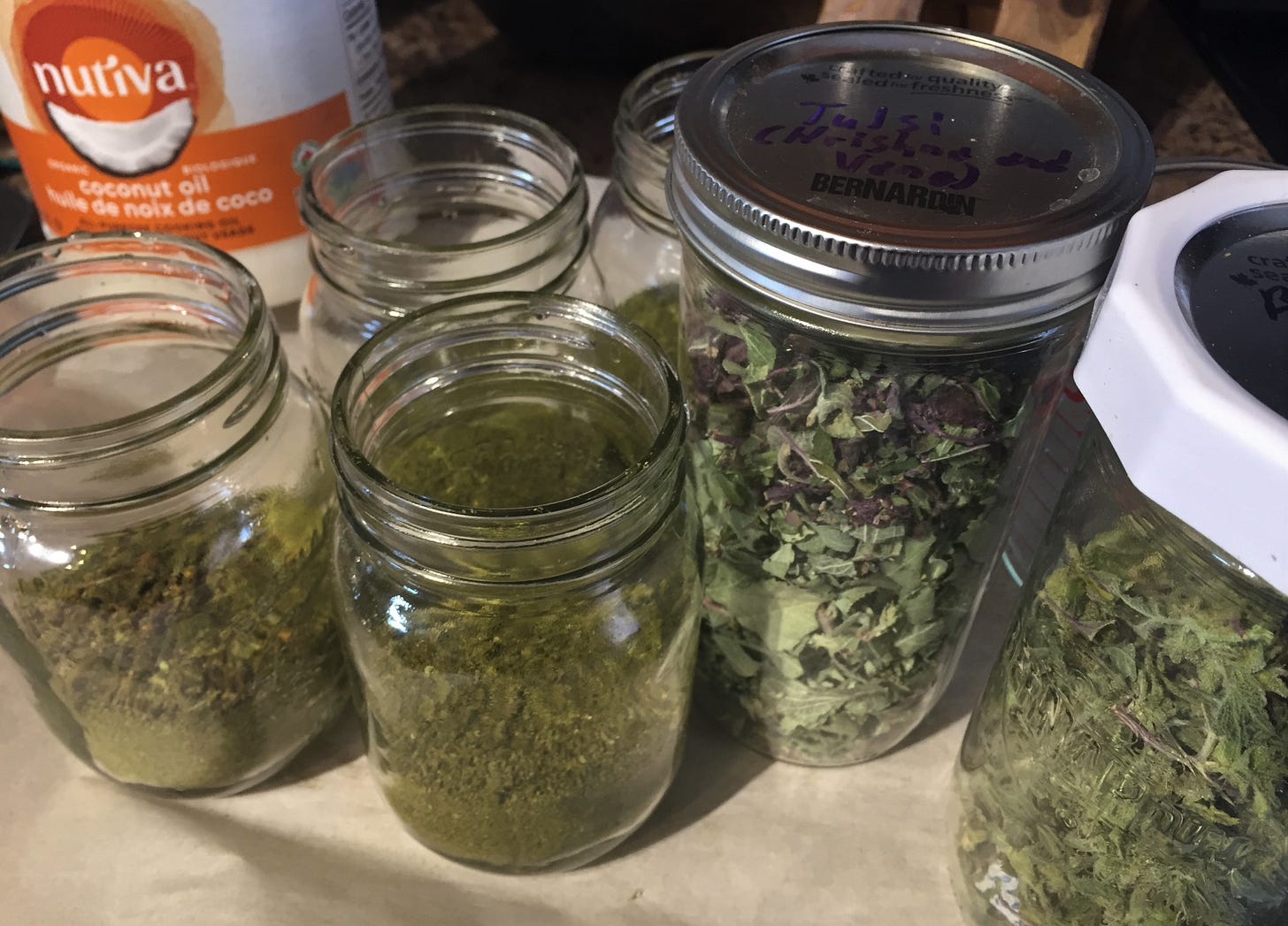
I begin my mixing a combination of dry powderized Decarboxylated and raw dried cannabis (in order to provide a full spectrum of Cannabinoids), with dry powderized, Holy Basil, Nettle, Sage, Burdock Root, Lemon Balm, Pine Needles, peppermint and lavender (flowers and leaves) together and fill up jars (half way full) that are small enough to fit into my slow-cooker. The ratio usually ends up being 1/2 cannabis and then equal amounts of the other 8 powderized herb ingredients listed above by volume).
Then I melt the coconut oil in a pot on low until warm and pour over the dried and powdered herb mixture in the jars until the jars are 3/4 full (pouring slowly to allow the oil to fully soak in and bubbles of air to be released from the herb mixture). I also add a clean dish towel between the jars to prevent them from bouncing off of one another.
I tighten the lids so that they are tight enough where water cannot get in, but not so tight that expanding gas cannot escape as the jars heat up.
The jars are then placed into the slow cooker with a clean dish cloth on the bottom (to prevent the glass from directly contacting the heating ceramic surface) and then I add water until the jars are mostly submerged and set on low for 6 hours to infuse the medicinal compounds from the herbs into the oil. Carefully open and Stir the jars every hour and half to ensure maximin potency in your infusion.
Towards the end of when the the oil is infusing I process my aloe leaves by cutting off the skin and only separating the transparent gel in the core of the leave for using in the salve. I make 4 jar batches in my slow cooker (500 ml jars) and end up adding between 1/4 - 1/2 cup of aloe gel. To process the aloe gel for being ready to add to the aloe gel I add it to a blender with 1 - 2 tsp of powderized citric acid and blend until smooth.
I add about 1 - 1.5 cups of cacao butter to a typical batch and I slowly melt it (in a medium sized pot) towards the end of when the coconut oil infusion will be ready to filter.
As the cacao butter melts I mix in 1 - 2 tbsp. of sunflower lecithin.
After 6 hours on low, plant material is then strained out via a 70-90 micron mesh filter bag (I use this one:
After separating the herb infused coconut oil from the plant material I mix it in with the cacao butter.
The remaining ingredients are added to the warm infused oil (including 10-20 drops of Frankincense oil and the aloe gel). I then emulsify all these ingredients in a blender to fully combine after which I poured into storage containers.

With the amounts of essential oils and citric acid I included in my recipe the salve remains at peak quality/efficacy for at least 3 months in the fridge and at least 6 months in the freezer (if stored in a airtight container that is protected from light exposure).



I have found that topical pain relief effects take from 2-4 minutes after application to kick in (depending on the thickness of skin or lack there of where it is applied). I have found it to be beneficial for speeding up healing when applied to the types of cuts, gashes and blisters that often result from my work.
When I ingest about a teaspoon internally and it takes about an hour before I feel the effects. When taken internally, general muscle and joint pain is significantly diminished after about an hour. This is also effective to help one get great night’s sleep.
As you can see I am a very big fan of the saying “Let thy food be thy medicine and medicine be thy food”! ;)
I would like to emphasize that salve I provided instructions on how to create above offers all the same benefits of a synthetic petroleum based topical pharmaceutical product such as “Polysporin Complete Ointment” but with many additional benefits that the pharmaceutical synthetic petroleum chemical product does not offer (such as being edible and capable of providing systemic pain relief and offering accelerated rates of cellular regeneration in wounds without building up anti-biotic resistance).
In closing I would like to express my deep gratitude to all the ancient (and modern) medicine women and men for experimenting with these plants, documenting their success, conducting scientific studies to prove out their hypothesis, and in doing so lay the ground work to make the formulation and creation of multi-purpose medicines like this possible.
It is my hope that this formula for a multi-functional topical medicine can serve as a template for improving and building upon (and be expressed in various forms and modes of preparation/preservation) so that many can optimize their health and resilience through natural medicine. It is also my hope that sharing recipes like this will empower many to be able to take another step away from depending on toxic pharmaceuticals and another step towards embracing 'Mother Earth’s medicine cabinet' as all we need to be our best selves.
Wishing you all many bountiful harvests, increased health sovereignty, freedom, peace, longevity and fulfilment.
“Find your teachers in the voice of the forests
unplug you can't ignore this
wisdom of the voiceless
Remedies are bountiful and surround us
from the garden to the farthest
prayer made of star dust...
...the medicine is in the seeds when we hold tight to our right to protect them we know our might is 10-fold in connection
our elders hold them bright lights
we protect them
the medicine is evident...
the wolf, the hawk, the bear clan
We hold tight to our right to protect them
we know our might is 10-fold in connection”


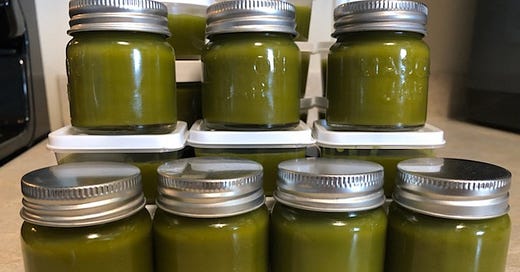


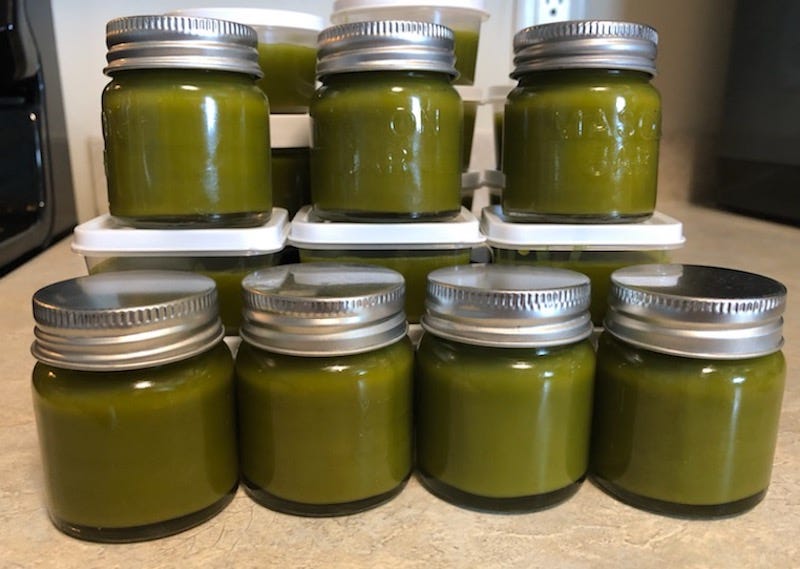
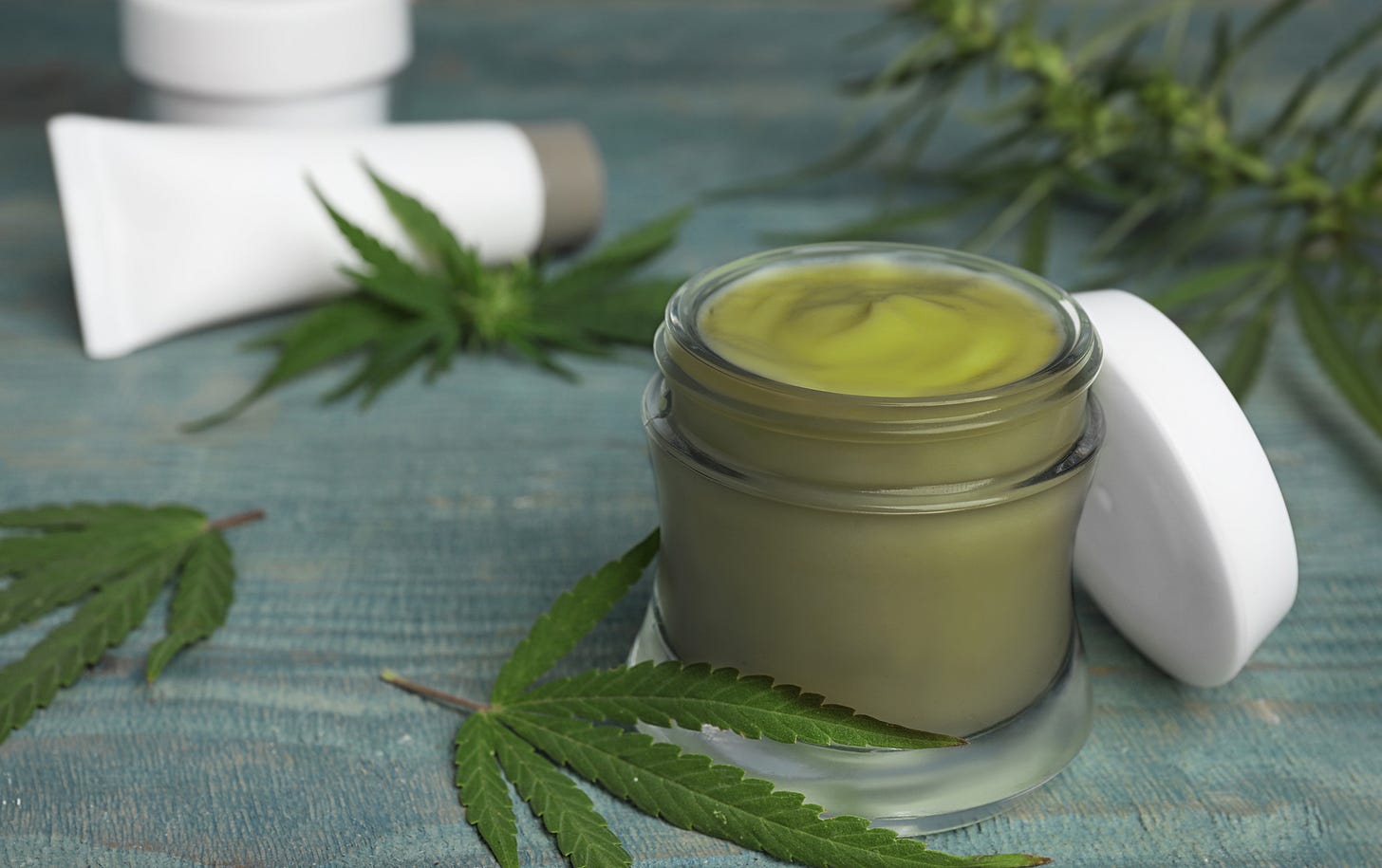


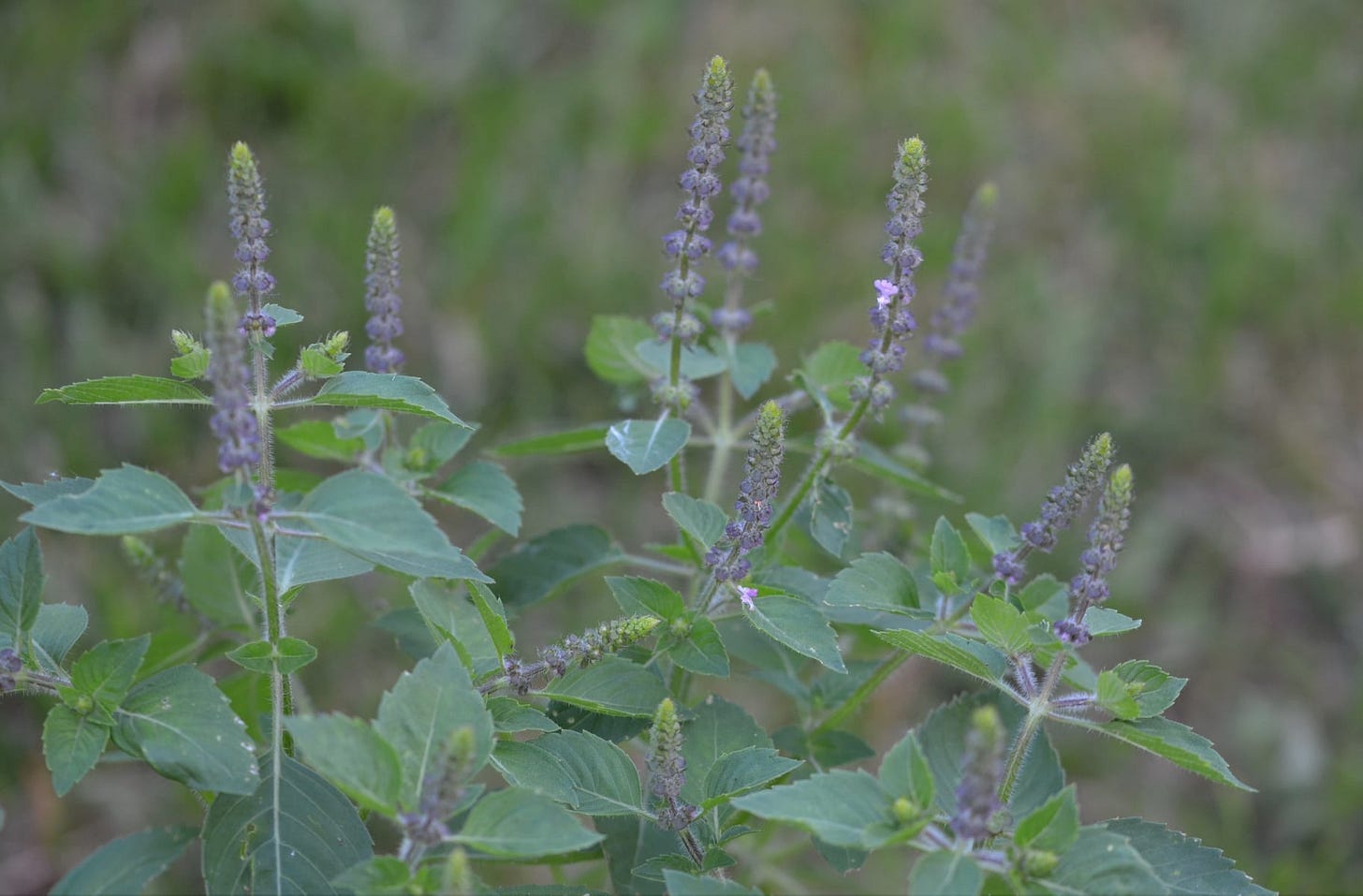
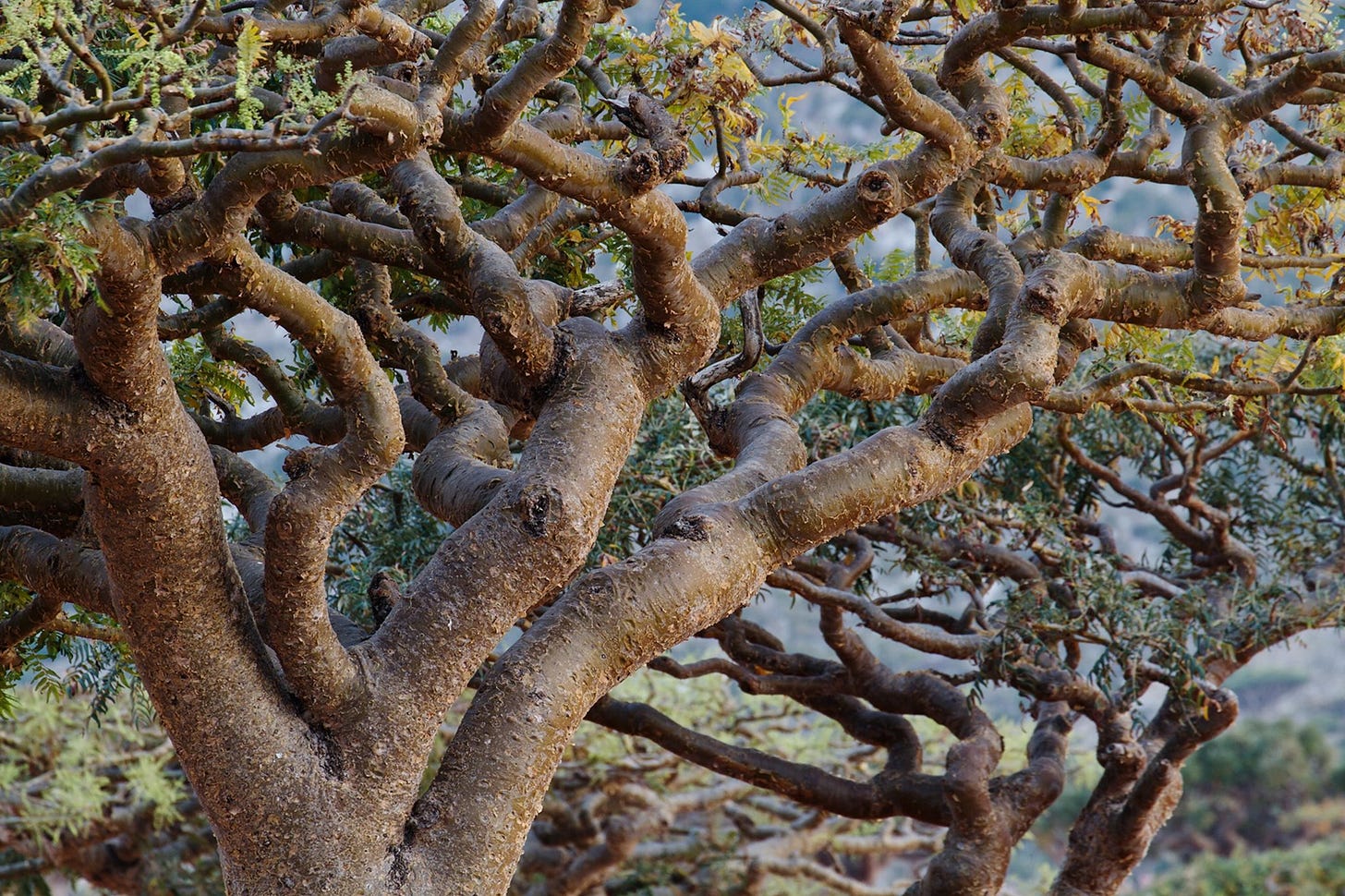
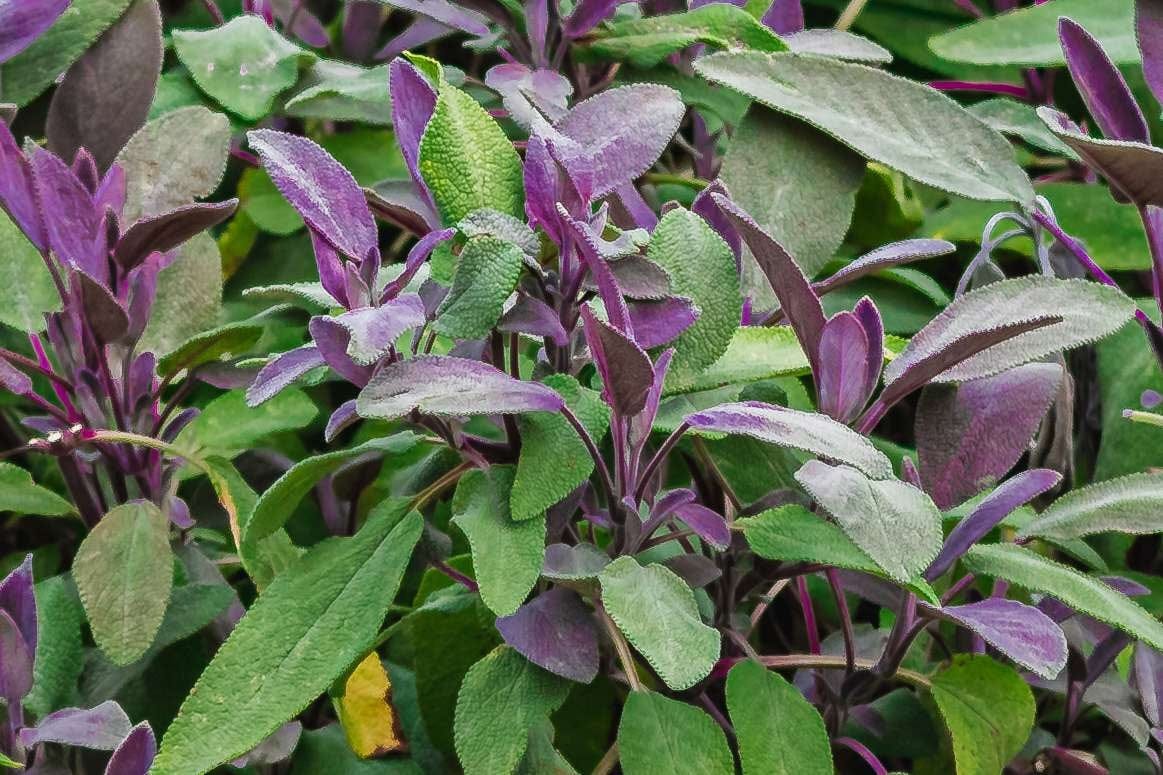
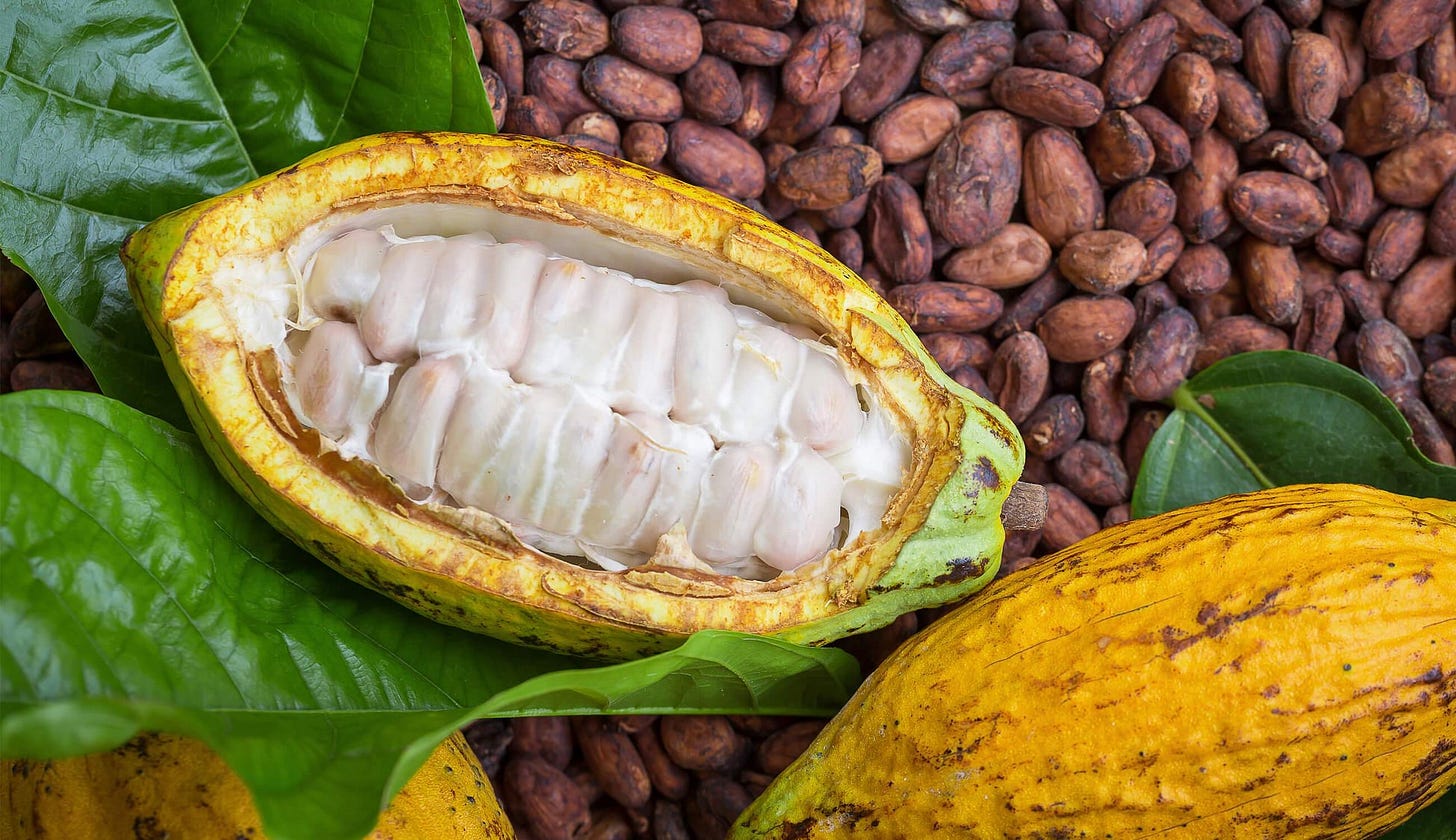



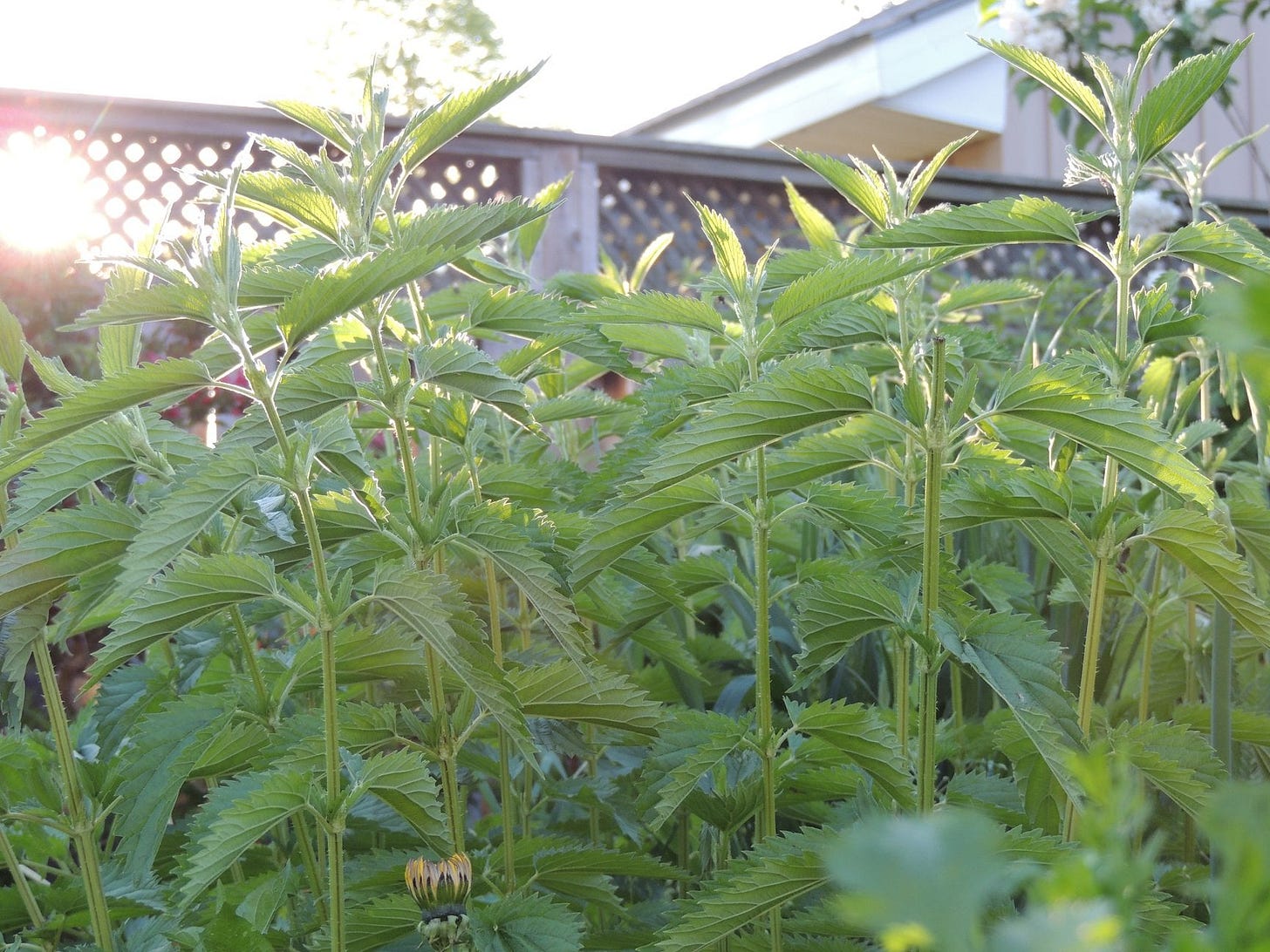


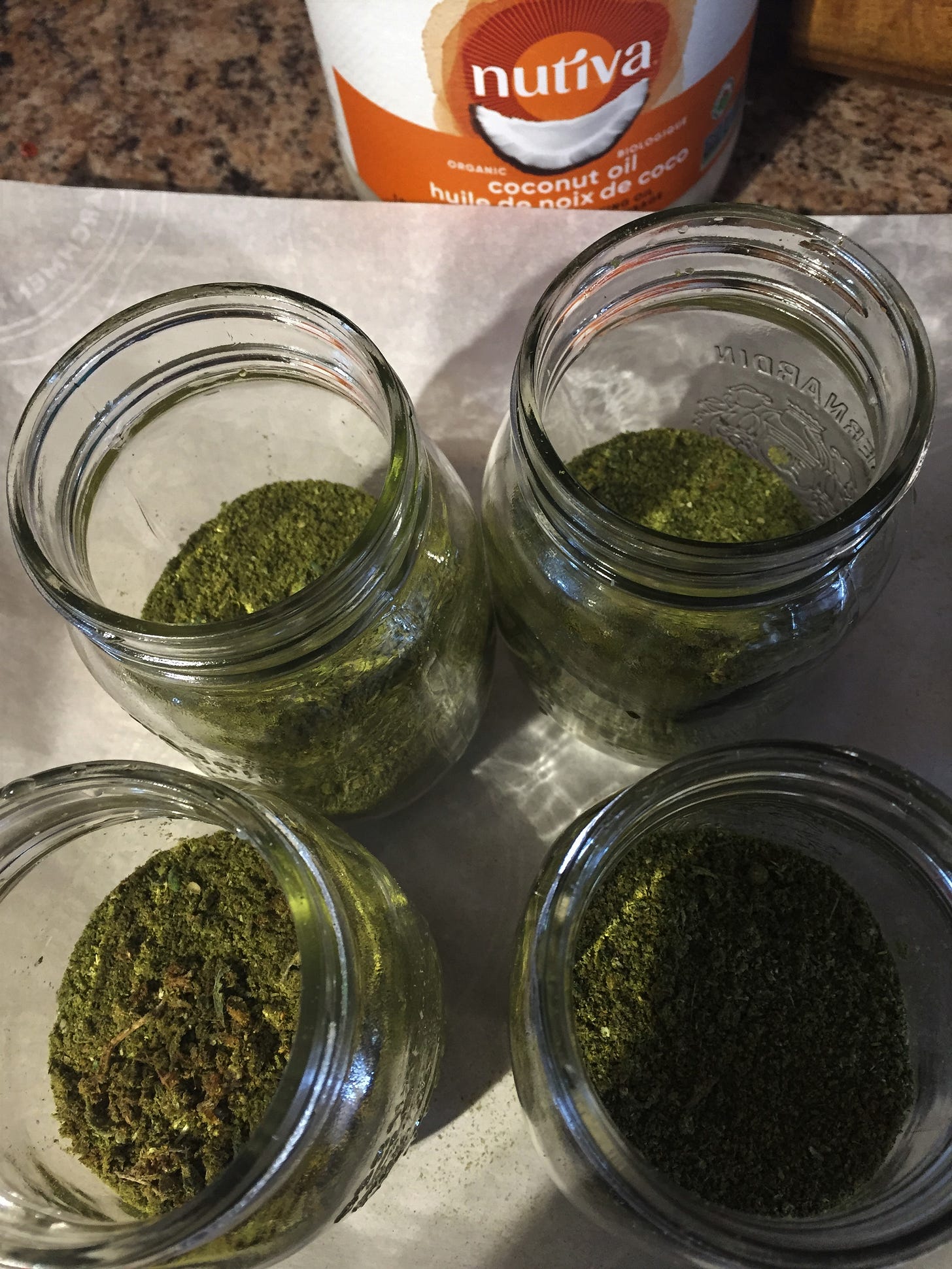
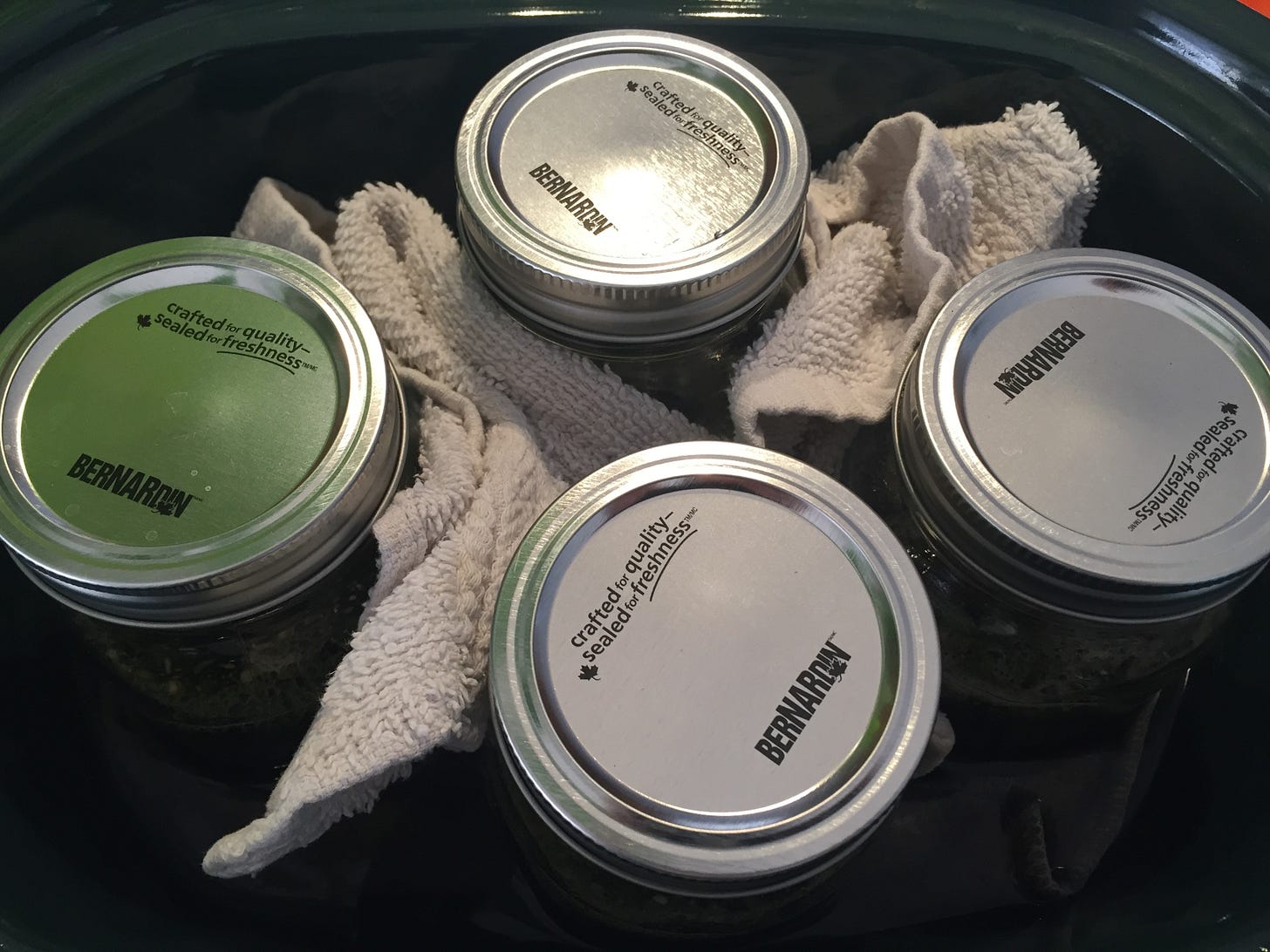
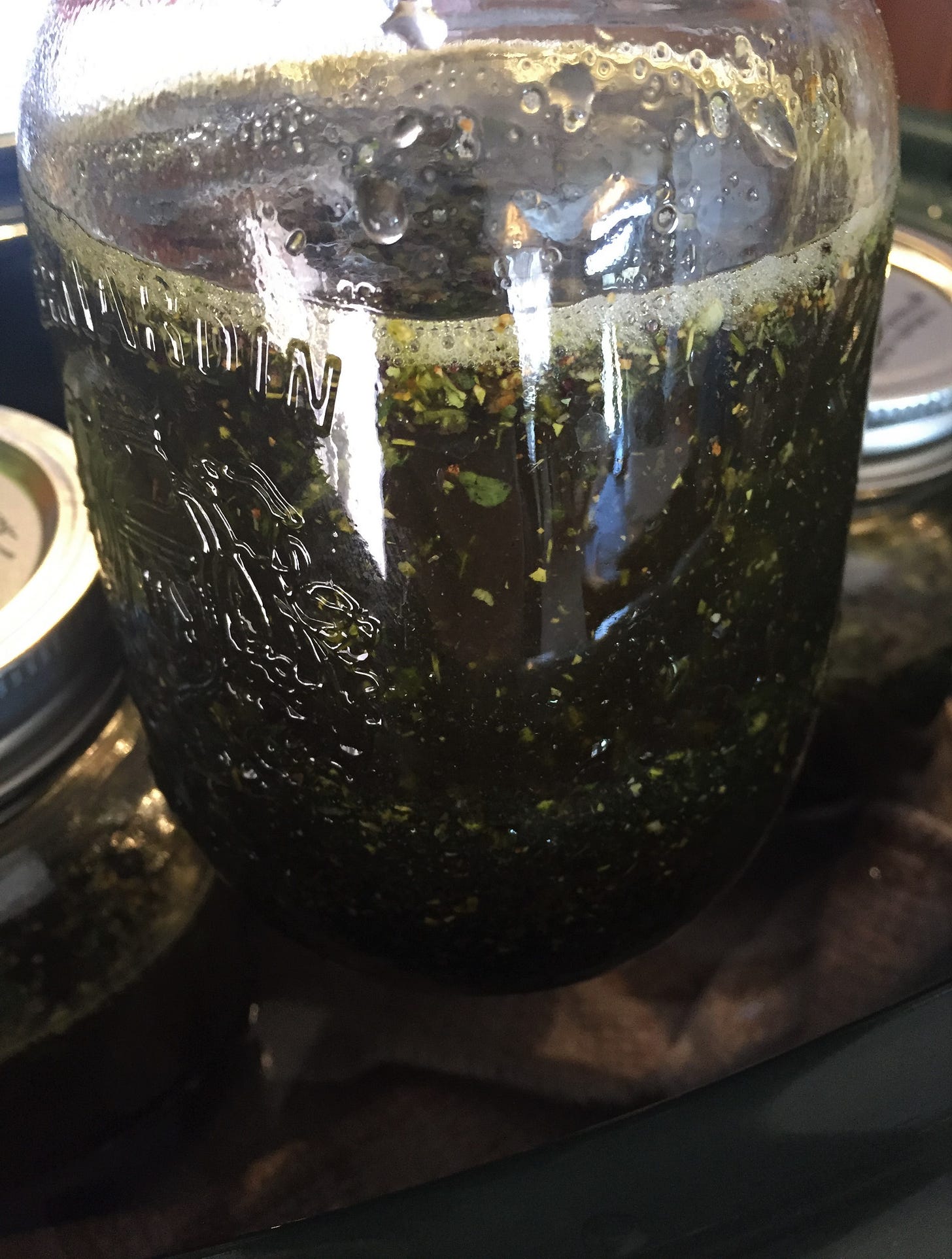


I really want to make this! I'm feeling a little daunted though at this list of ingredients and the process:( I think you should sell this 😉
Fantastic list! One more herb that is quite fantastic for wound healing is comfrey. 🌱